They rebuilt the ‘new’ house at Trereife in 1710, on and around the older one, as has so often been the case. There’s a back drive with high stone gate posts and rhododendrons and this front one, running up beside the old park palings. The Le Grice’s have owned Trereife since the early nineteenth century, after Charles Valentine Le Grice arrived here to tutor the son of the widowed Mary Nicholls in 1796. Charles had been a pupil at Christ’s Hospital with the Romantic poet Samuel Coleridge and counted Charles Lamb and Leigh Hunt among his friends. Within a few years he had married his employer and taken holy orders; and after his wife and stepson both predeceased him, Charles inherited Trereife, leaving it to his son, Day Perry Le Grice.
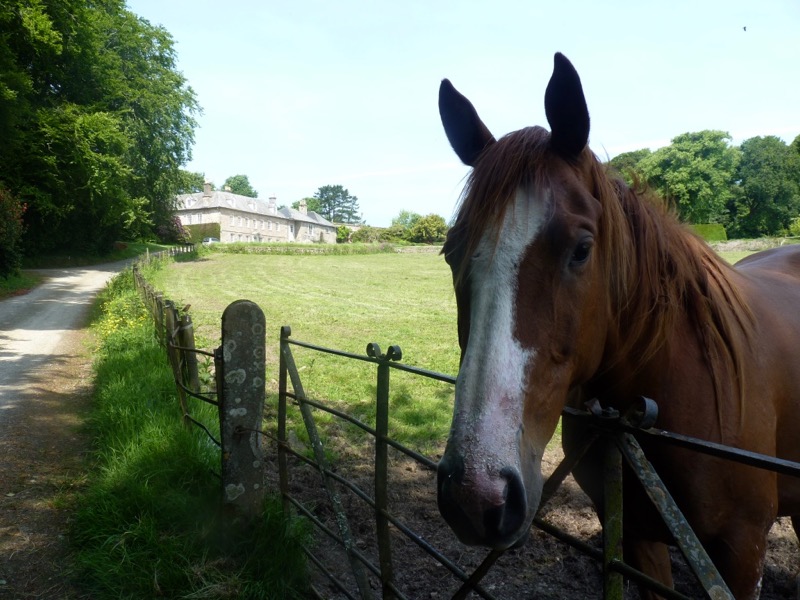
Tim Le Grice has lived here since the 80s with his wife Elizabeth, their family and their black Labrador, Milly; their old Labrador Duke, a noble dog, died earlier this year and is buried in the garden here. This is the mare, Grace, one of Tim’s much cherished horses.
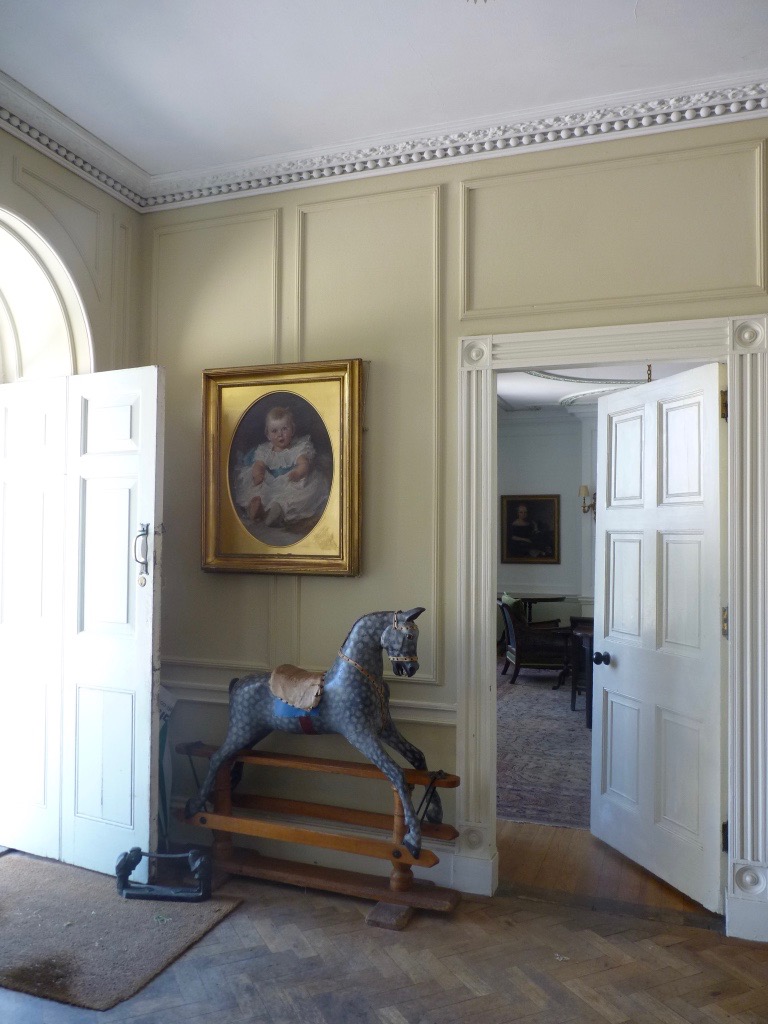
Just inside the front door
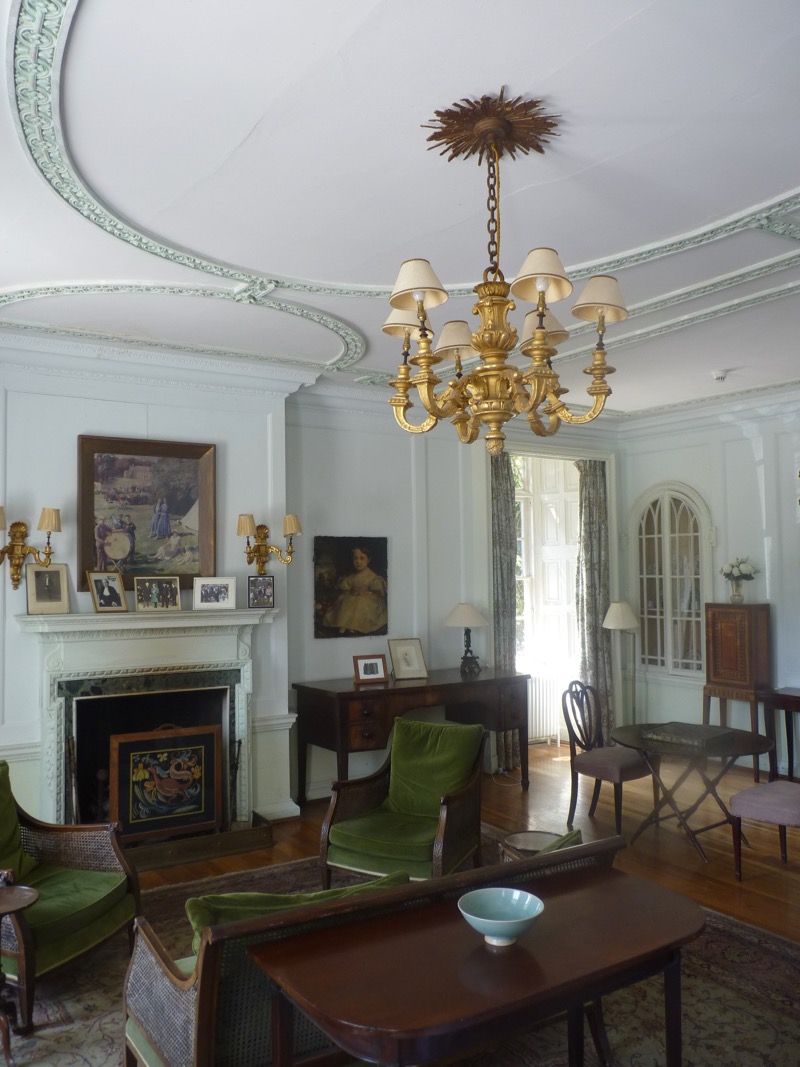
Beyond it, this lovely drawing room, re-paneled in 1920 ( the original paneling had been replaced with more fashionable wallpaper). ‘This room’s had several re-paintings,’ says Elizabeth Le Grice. ‘Below the dado, that turquoise colour was done quite a few years ago, I painted it with my nanny in the 80s. But then a painter tried to match that colour and got it wrong, so it’s a sort of mixture but it works. It was a sort of Salmon pink that Tim’s mother had had for years, and when I painted the doors Lyn [Lyn Le Grice, the interior designer] said, ‘Make sure that the pink comes through the paint,’ which I like. The curtains were a gift from Tim’s sister, Tasmin Sowerby, when her son got married here, to thank us; Lyn Le Grice found the fabric for us.’
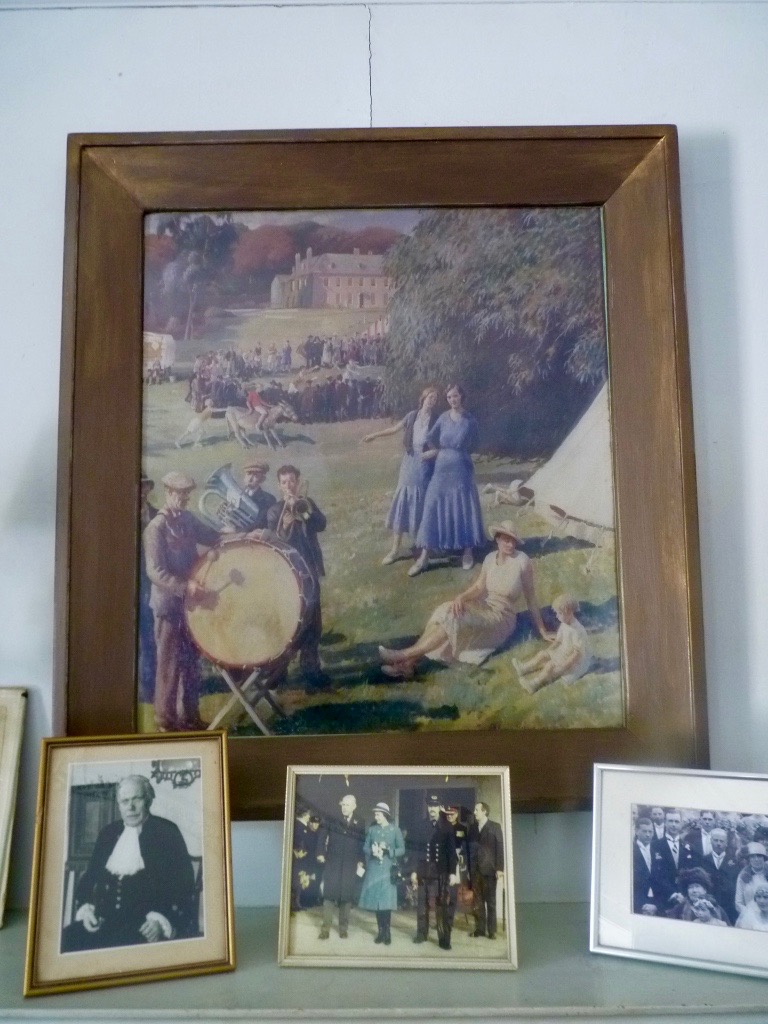
‘Over the chimney is Harold Harvey ‘s Newlyn Gala Day at Whitsun, set in front of the house. It’s a copy, we no longer own the original.’
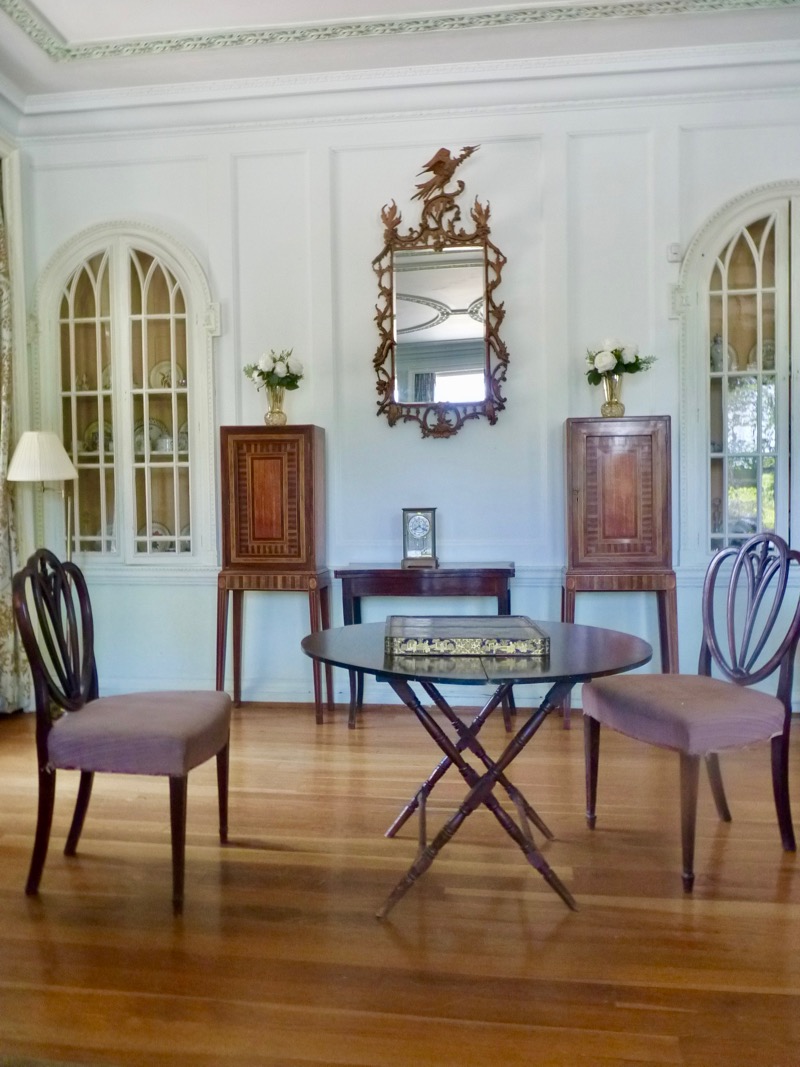
‘What do you keep in these cabinets?’ ‘Nothing. That looking glass, we don’t know what it is.’ This is also the sitting room for guests who stay here for bed and breakfast.
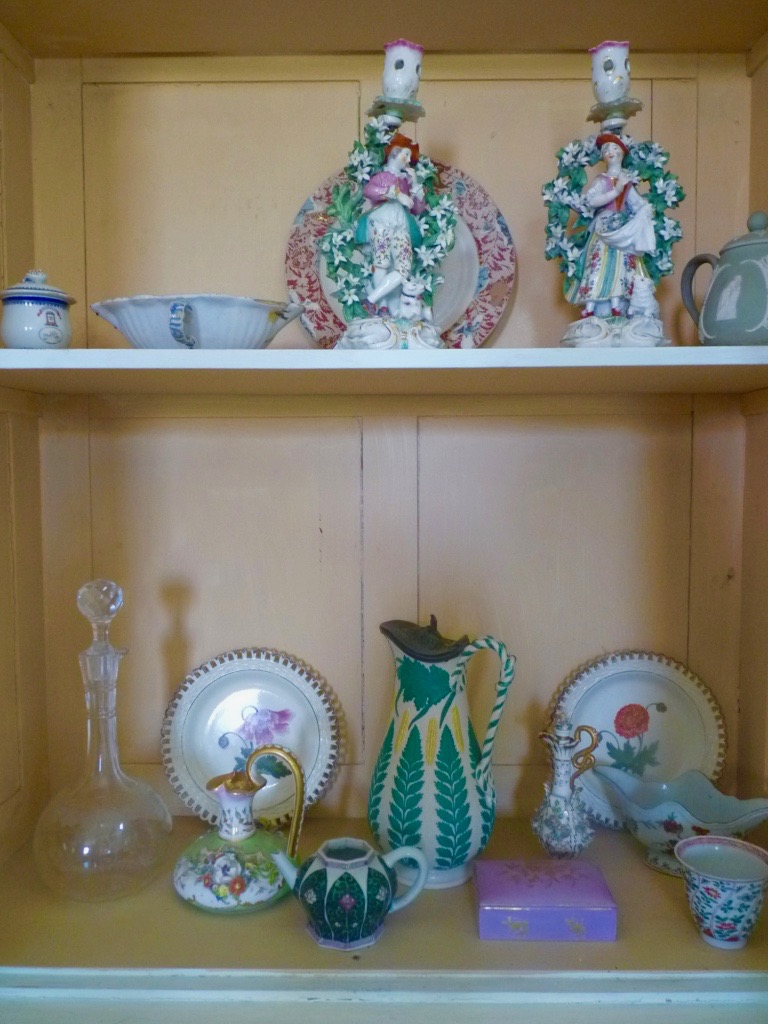
‘The NADFAS specialist told us this china isn’t all that valuable. The plates are hand painted. My grandfather collected those.’
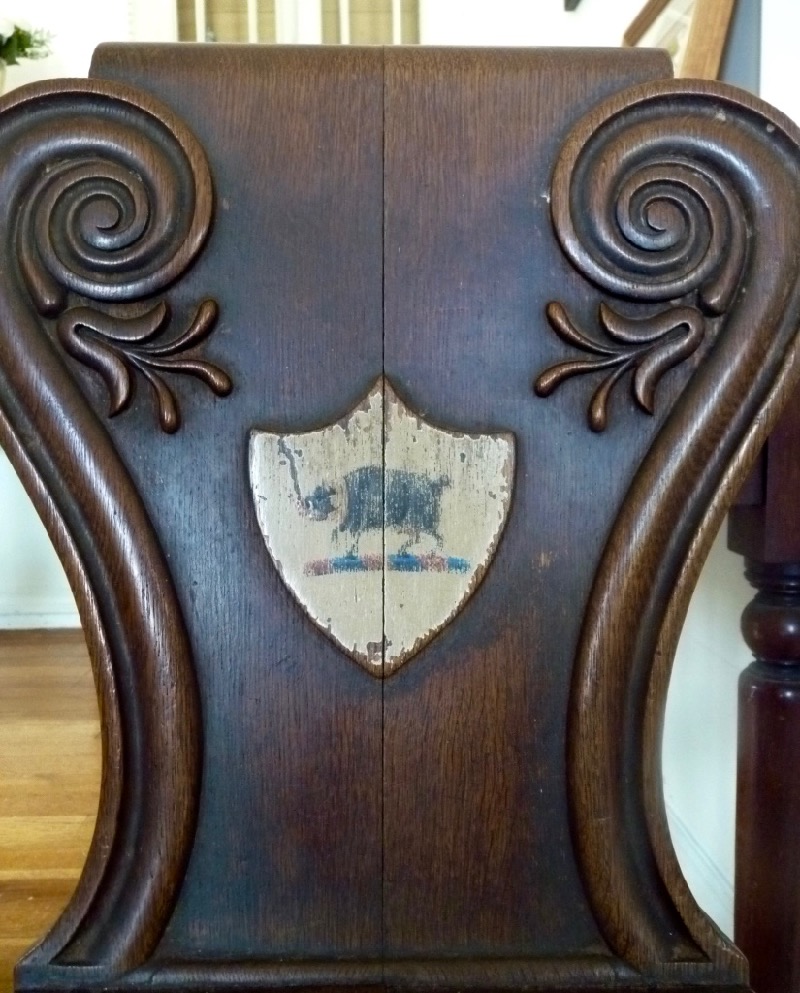
This is the Le Grice family crest on one of a set of hall chairs.
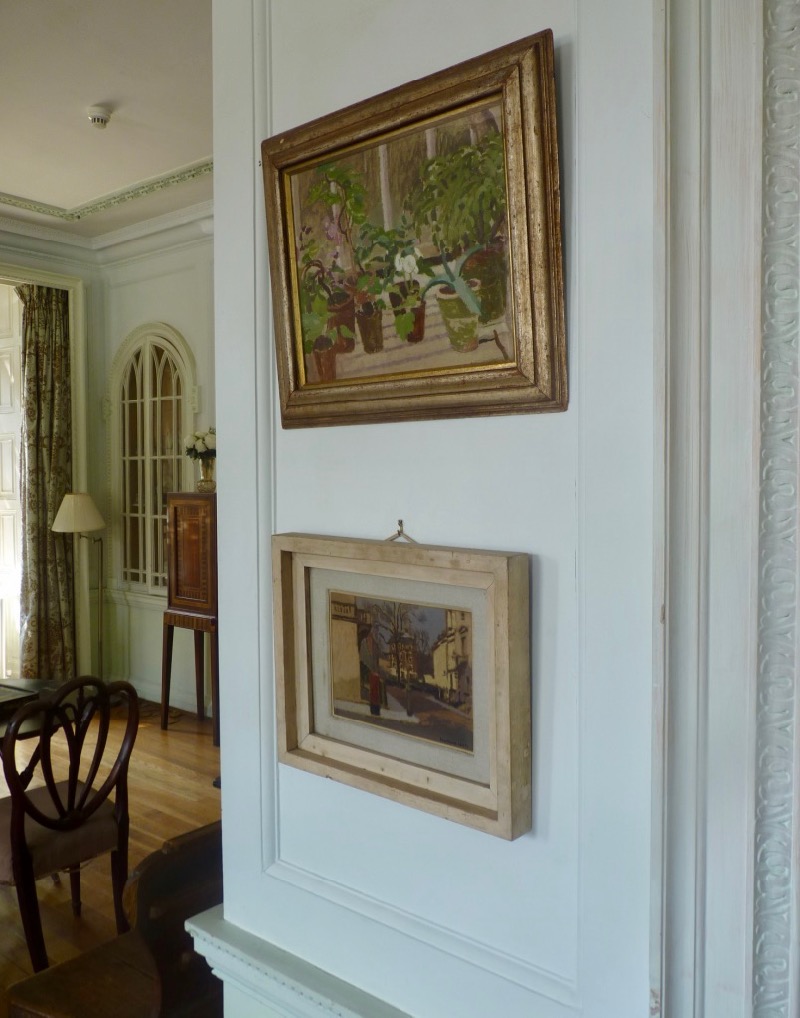
‘The two small paintings on the left of the door, they’re by Sickert’s most promising pupil, through the connection with Alethea Garstin.’ Garstin was a central figure among the Newlyn Painters. Patrick Heron called her ‘England’s leading Impressionist.’
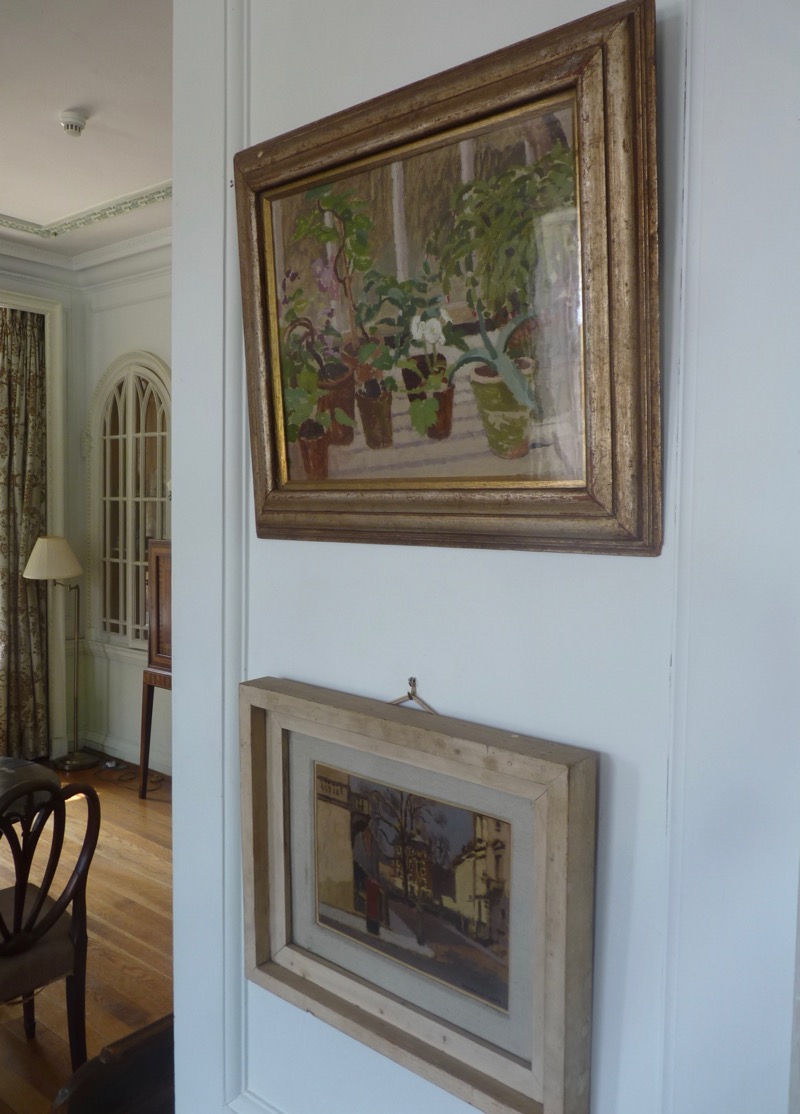
‘I was Alethea Garstin’s family lawyer,’ says Tim Le Grice. ‘I found them in our safe, two pictures by the same person in two parcels. She had told me about the love of her life who was killed in the war, and I couldn’t help wondering if it was the same person who had painted these, the painter Edward Morland Lewis. He was killed. and he was only 26. He comes from Newport in Wales and his paintings are in Newport Museum, they are of the same era as Cedric Morris.’
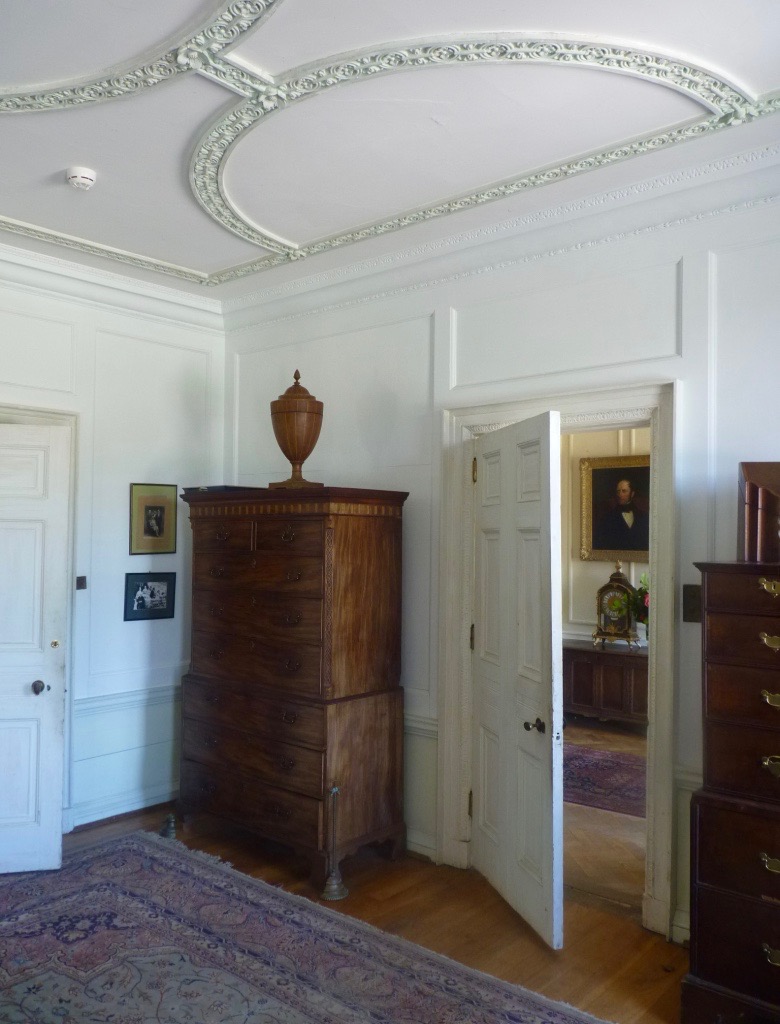
‘All the cutlery boxes and quite a lot of the furniture came from my mother’s side. She was a Ward,’ says Tim Le Grice. ‘My father loved the sea and sailing and all those things, I was more interested in books and history.’ Peter’s mother Wilmay was a wartime bride, marrying to Charles Le Grice who had joined up with the Devon Yeomanry in 1940. After following his regiment, she went to live with her mother and father in law at Trereife and much of its present appearance is owed to her. For a while the house was let as as an old people’s home and the young couple and their family could only move back in when its proprietors, Mrs Cherry and Miss Chapman, did a flit. “I was bicycling up the drive with a friend of mine,’ says Tim, ‘and a lorry came down with all their furniture, they were doing a runner. They were difficult tenants, they had refused to pay rent for a long time, but it was worth it to get this extraordinary house back! They had run out of money and lived the last few months in the boiler room, leaving Trereife dirty, rat-infested and painted in strange colours, ‘including a really shocking pink in the drawing room.’ Wilmay and her husband ripped up the linoleum which had been on the bedroom floors and began to make it a ‘little bit more human.’
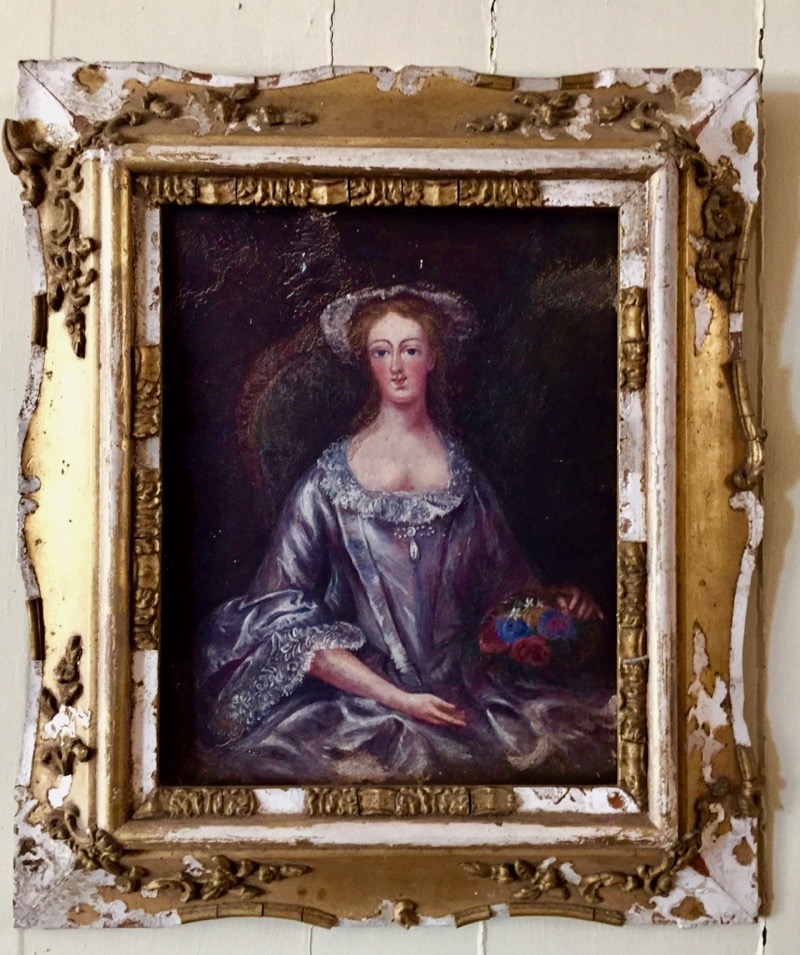
This little portrait of Mary Nicholls, who came from a local gentry family in Botallack, hangs in the hall.
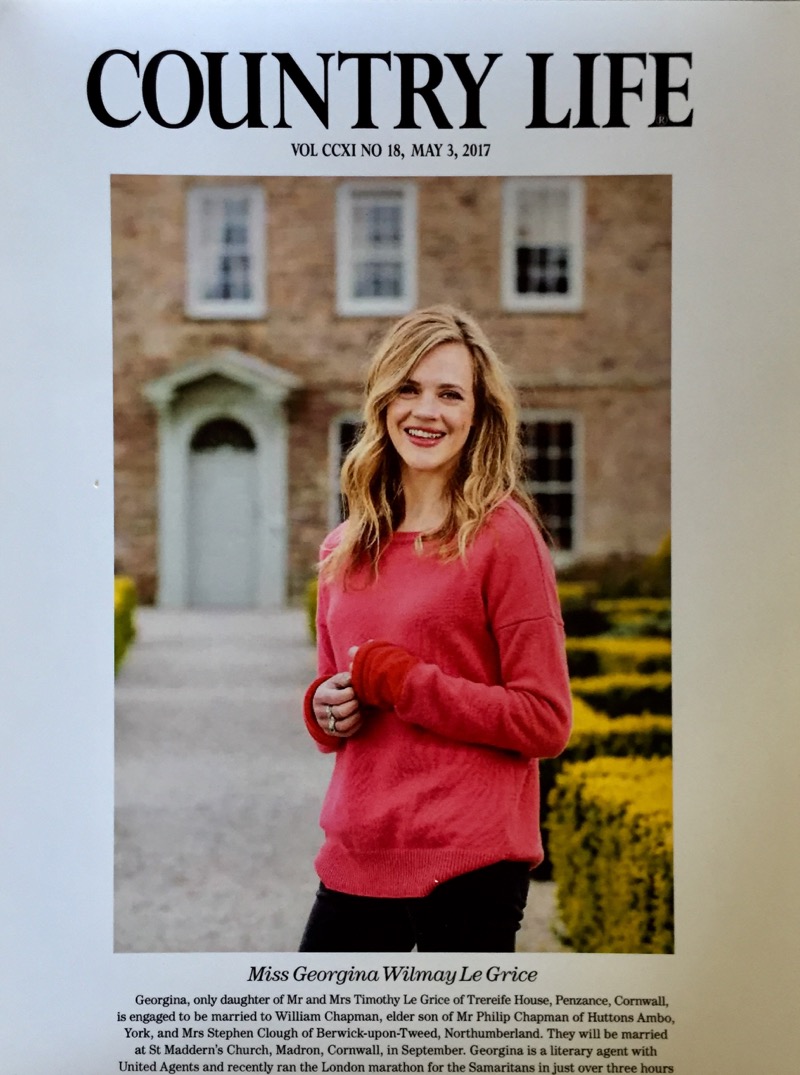
Tim and Elizabeth’s daughter Georgina is here too, as photographed by Country Life magazine.
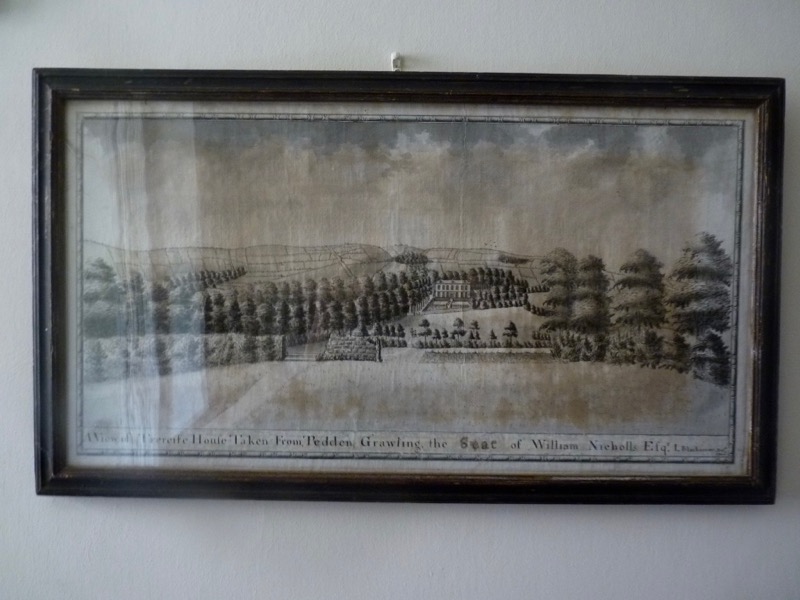
Trereife was rebuilt by John Nicholls, a successful Middle Temple barrister whose family had farmed in Cornwall since before the reign of Queen Elizabeth I. In the early C18th he remodeled the old house, adding a new front in the Queen Anne style in 1711. He died almost bankrupted by what he had undertaken. This is one of three views made in 1766 hanging in the small hall leading to the dining room that show the house and landscape as planned by John Nicholls, in all its Queen Anne symmetry.
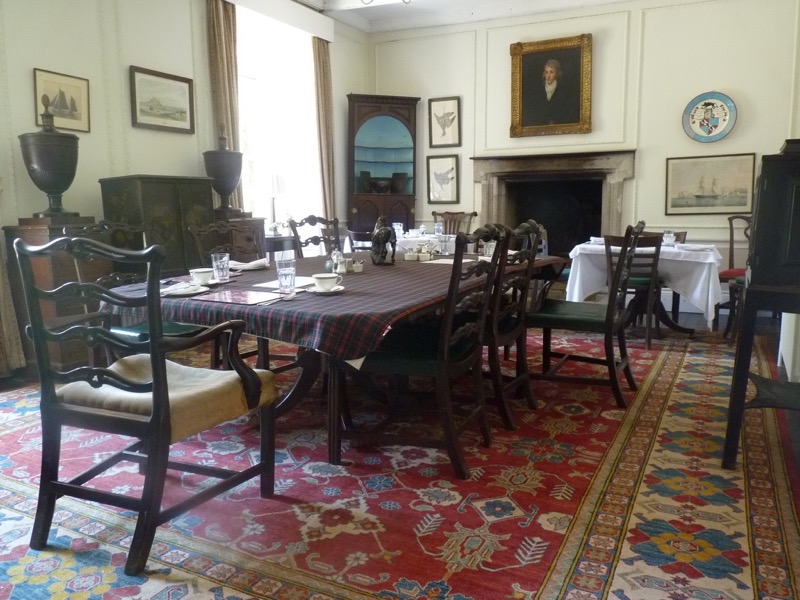
The Dining Room, laid for the ‘Full English’ breakfast offered to every guest staying in the bed and breakfast rooms here. ‘That’s another ancestor of yours, with a long face, Colonel Perry, master of the King of Spain’s Horse. There’s one dummy door for symmetry. And the Le Grice family crest on a plate. The little achievements of arms, one is for the Nicholls family. Nicholls was sent up to London at only 17, and established himself so well as a barrister that he was able to do this incredible thing, turn a Cornish farmhouse round! The fireplace dated 1603, he would have remembered that from the old house.’
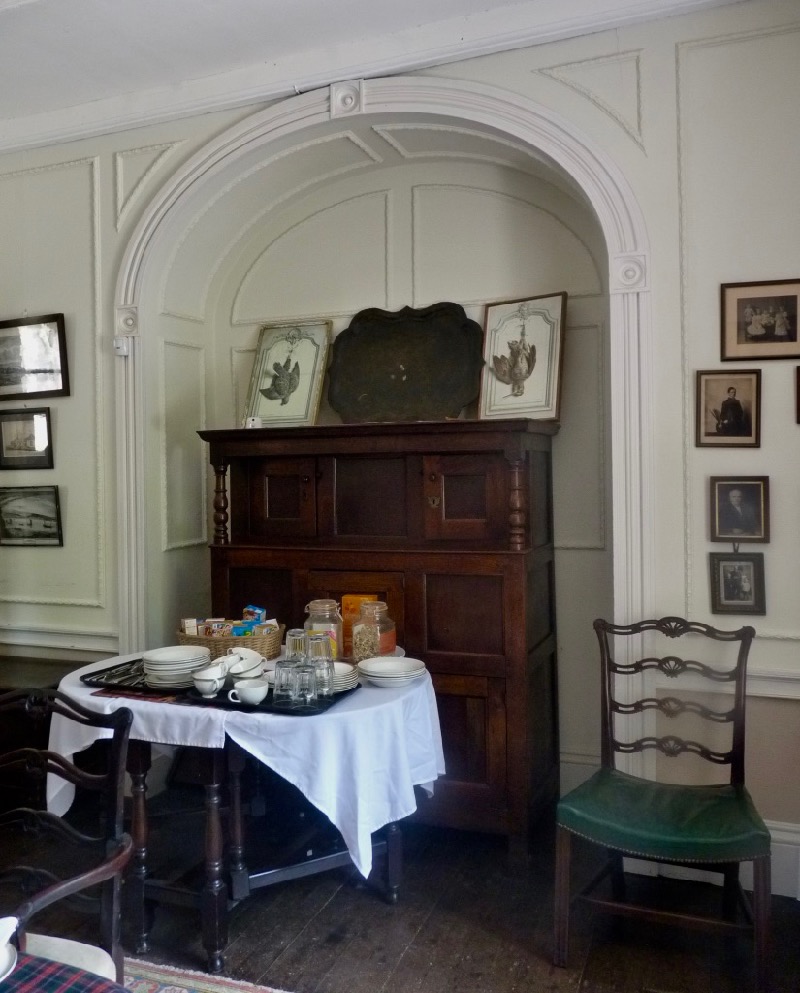
‘This court cupboard was given to us about 2 years ago. A man from St. Erth village said he’d inherited it from his granny in Wales, he’d offered it to the National Trust and they didn’t want it, so he said, Would you like it? We keep a lot of stuff in it. That painted cupboard was French, that was your mother, Wilmay’s. Her father was ambassador in Paris. It came from Rolleboise, their converted farmhouse outside Paris. A lot of furniture came back before the war from there, it was thought the Germans were likely to take everything.’
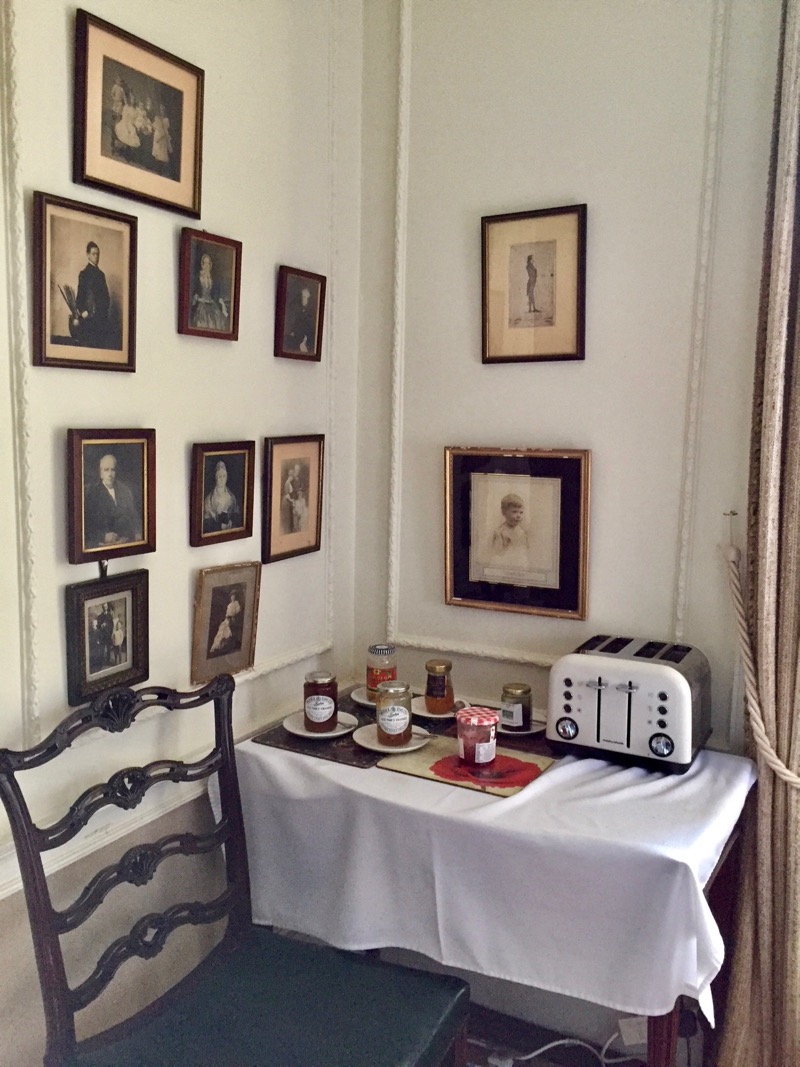
‘All those photos are Tim’s family, the Wards, and his mother Wilmay’s godfather there, Sir William Nicholson.’
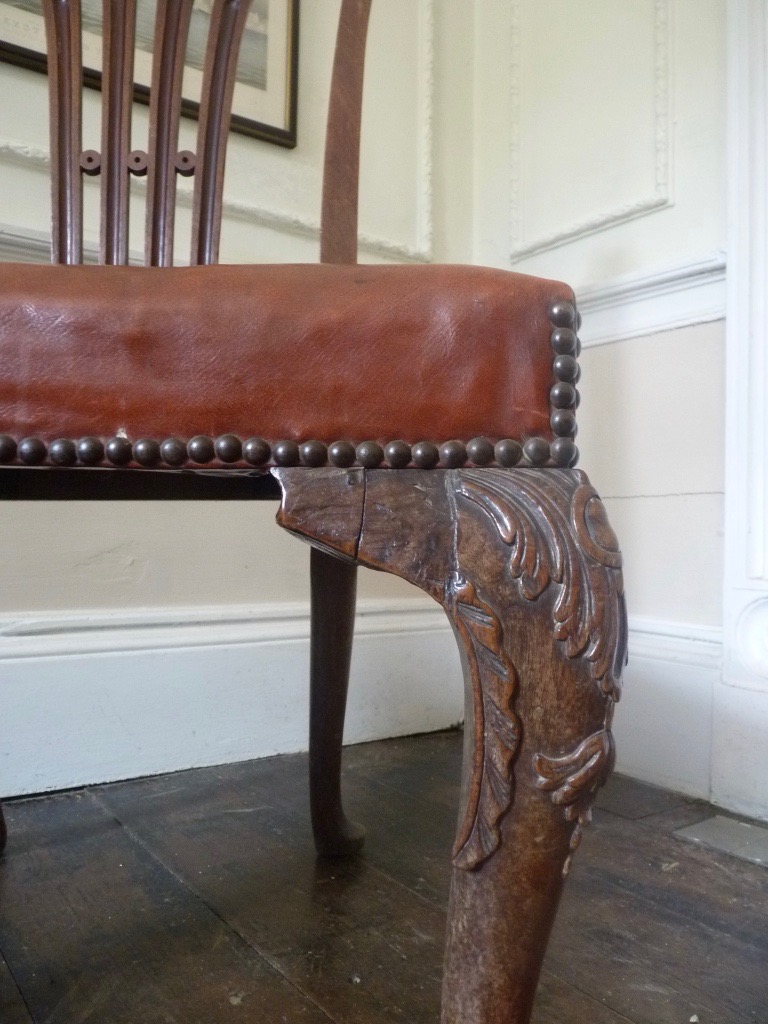
The beautifully carved knee of a C18th chair in the dining room.
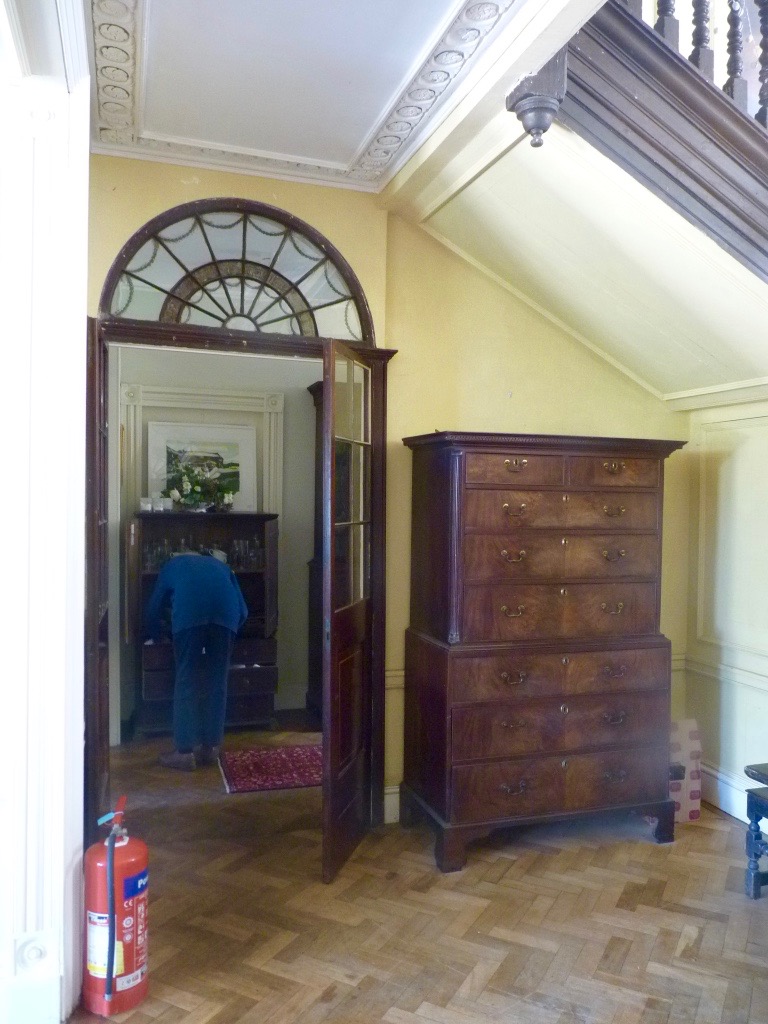
‘That fanlight there was originally above the front door. My grandfather decided it didn’t suit the Queen Anne part of the house.’
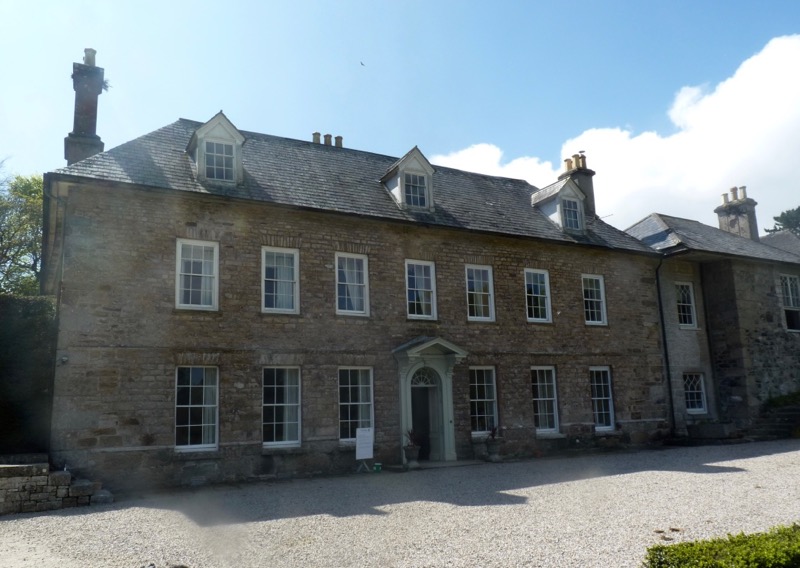
‘I came here 35 years ago when we were married, in ’82 or 3, the children were small, Peter was born here,’ says Elizabeth Le Grice. ‘We had a cottage up the road, Tim’s mother Wilmay lived here and I thought, I don’t want to move in, nobody will visit! And I got used to it over the years.’
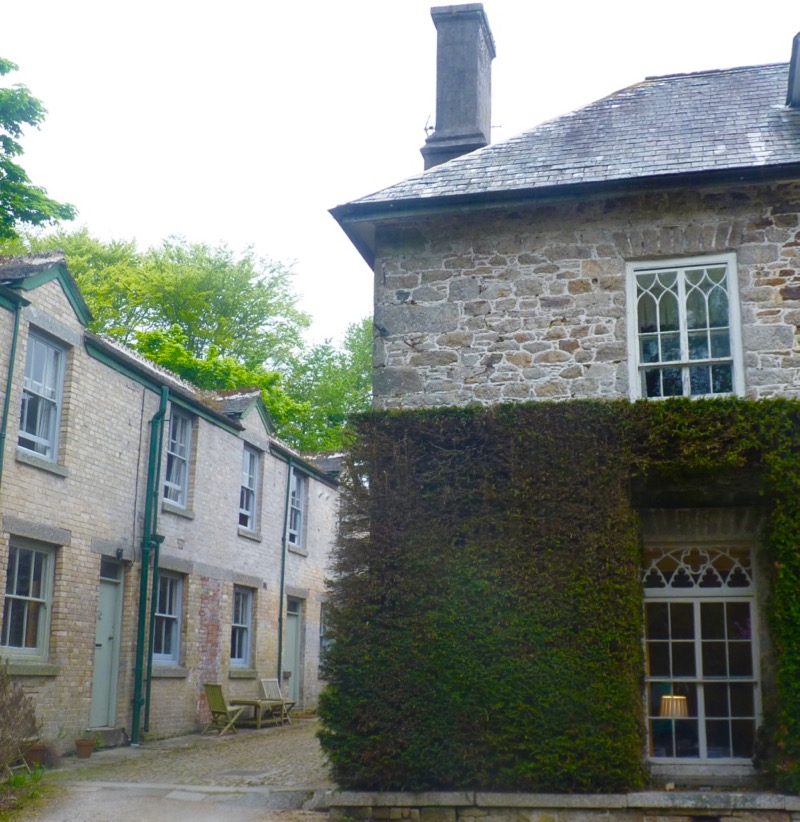
Turning the corner of the house, into the stable yard.
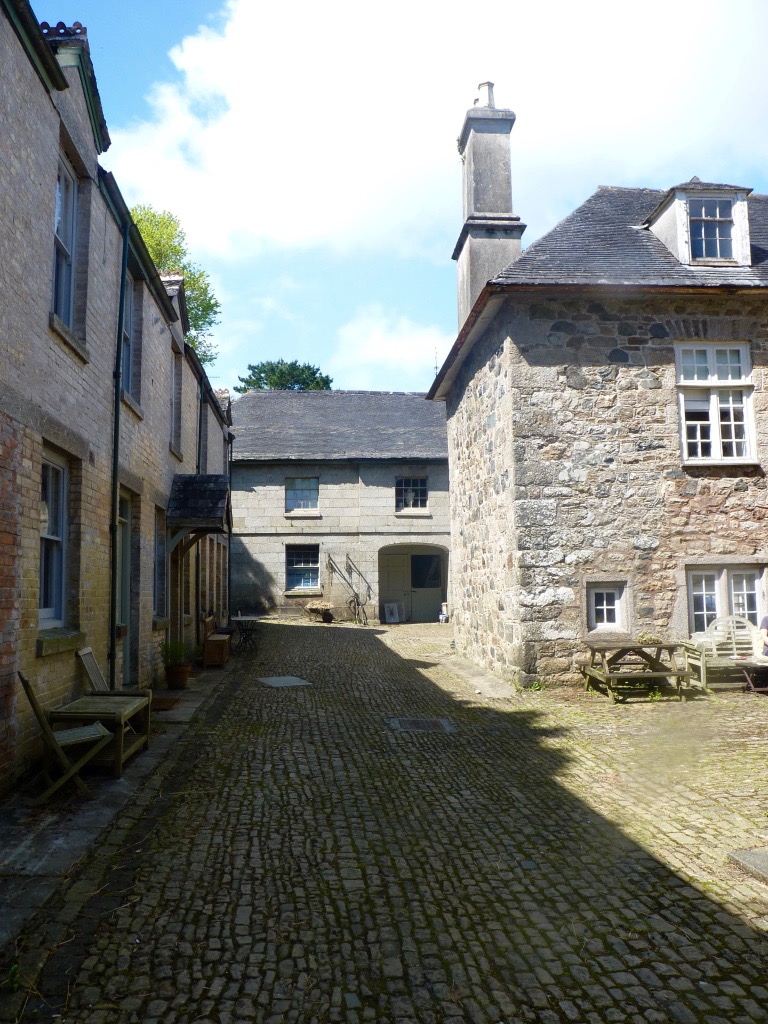
At the back of the stable yard is the Flower Loft. Post-war, Tim’s father had tried running the estate as a flower farm growing anemones, violets and early daffodils,that were bunched and packed in boxes in the flower loft (overseen by his wife, Wilmay) and sent to London by train. He became very interested in the science of daffodil production. Violets were picked by the gardener’s wife and her friend and bunched in the Trereife scullery, stored in a galvenised bath, but when Wilmay asked to be shown how to do this, she was told, ‘Mrs Le Grice, you are not Cornish, you will never learn how to make a pasty and you will never learn how to mange violets, and we re not going to tell ‘ee.’ Wilmay found that the Cornish did not really like people ‘from away.’ ‘My children are accepted whole-heartedly but I know that it can’t be quite the same for me.’
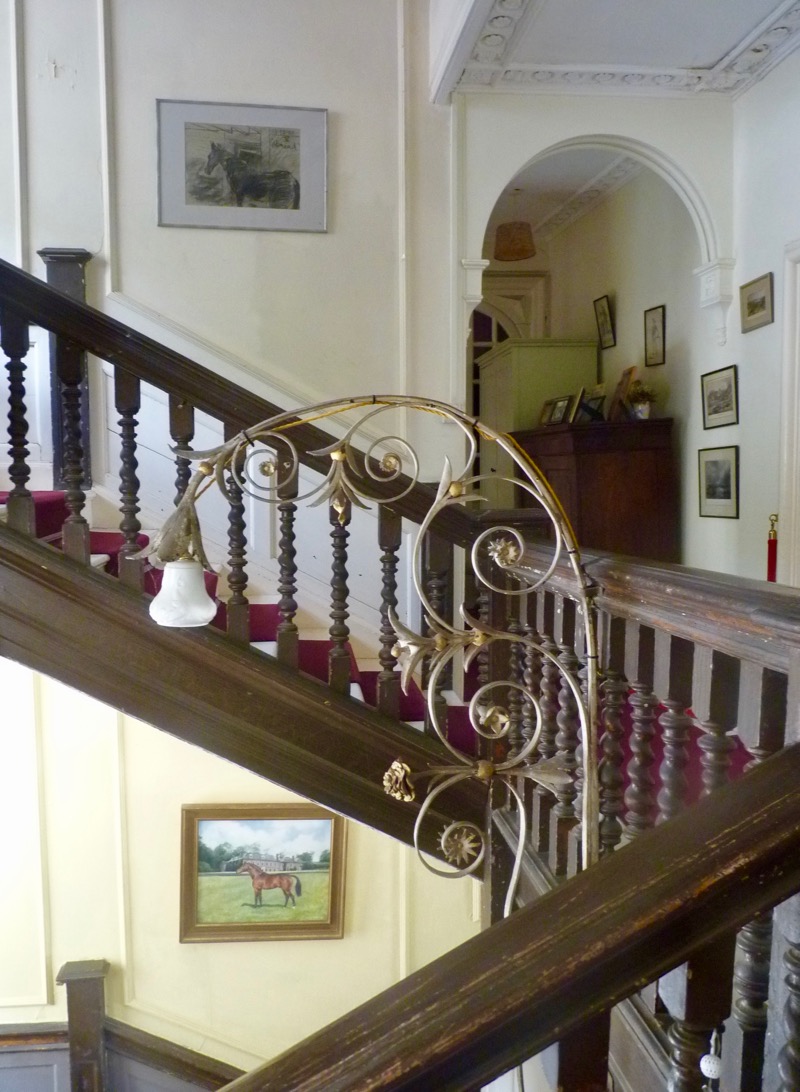
‘The staircase is probably from an older house, probably 17th century.’
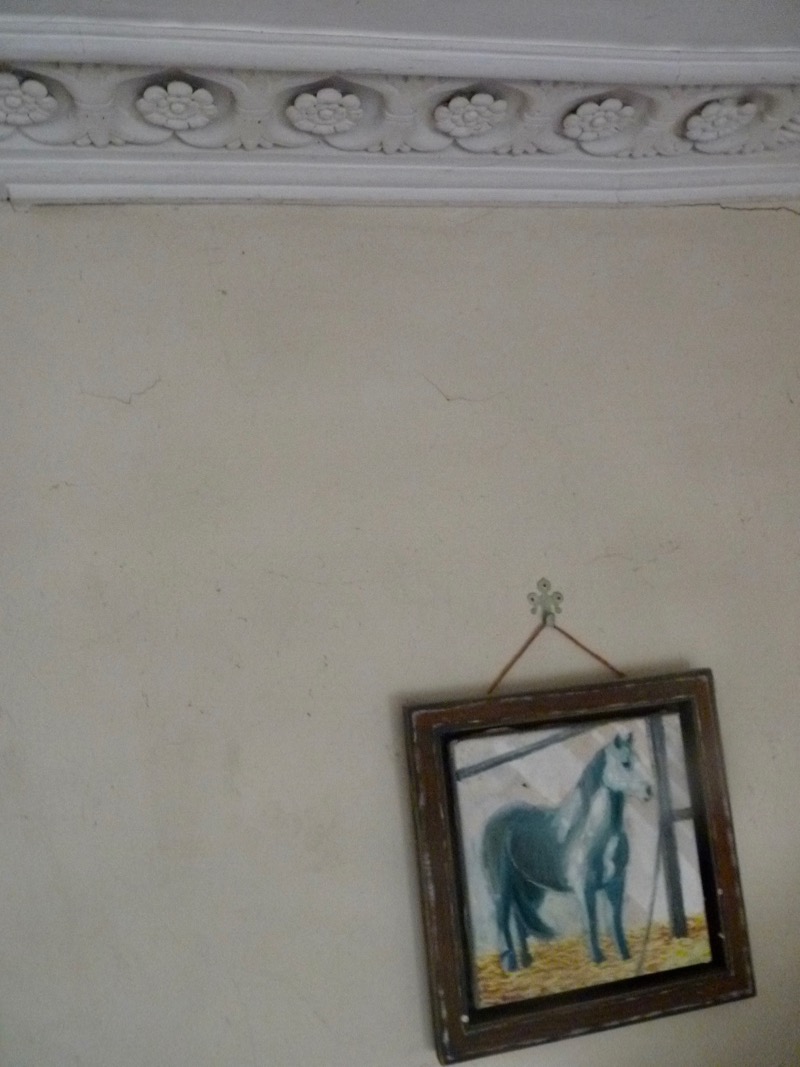
‘That little horse picture by Jeremy [Le Grice], it’s Georgina’s pony.’
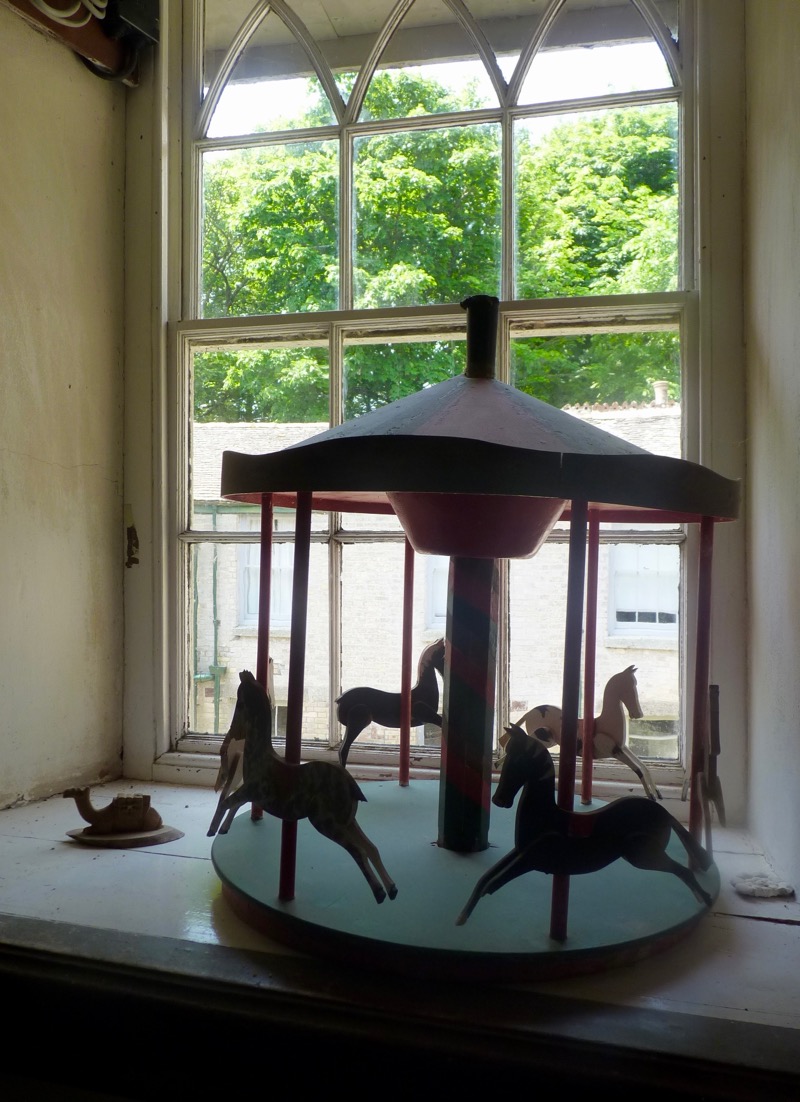
Landing window sill on the attic staircase
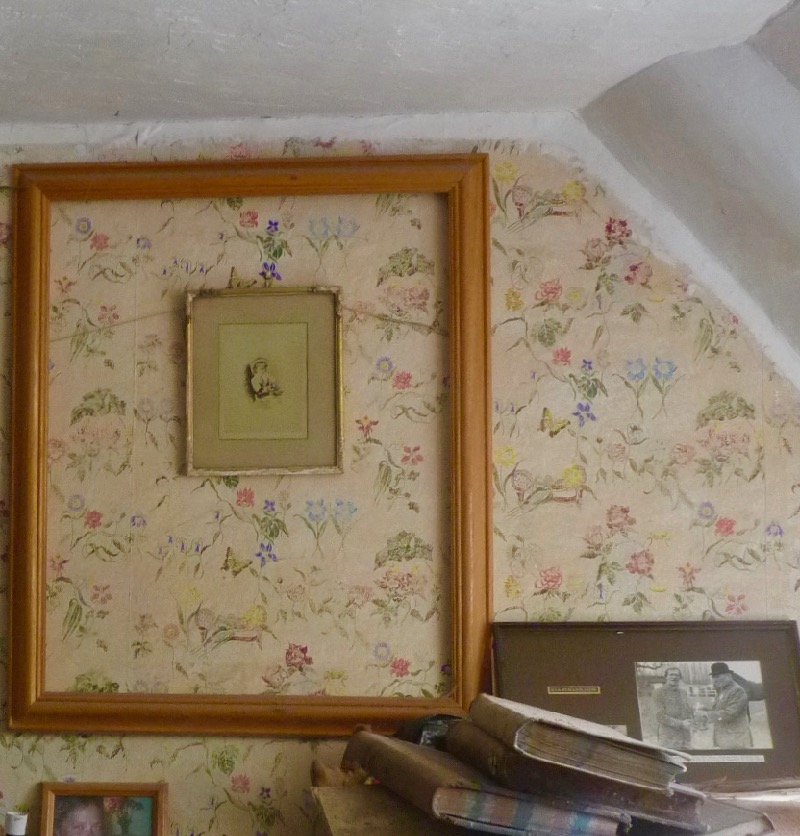
The charming floral wallpaper surviving in one of the attics.
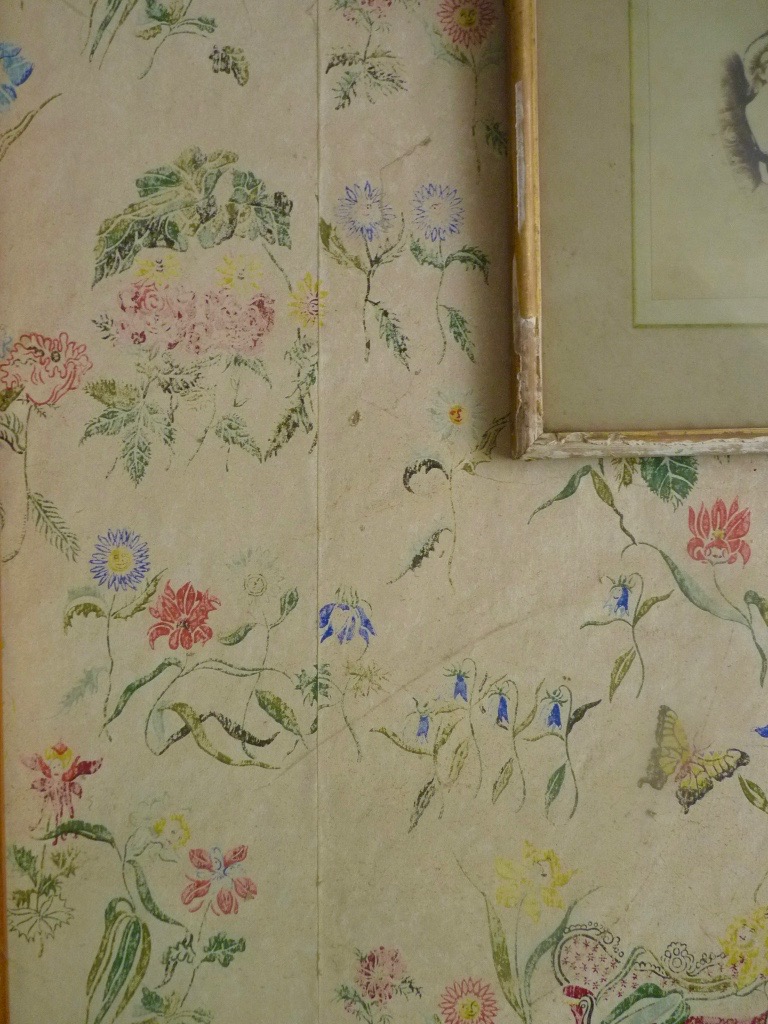
Detail of the wallpaper which was recently uncovered
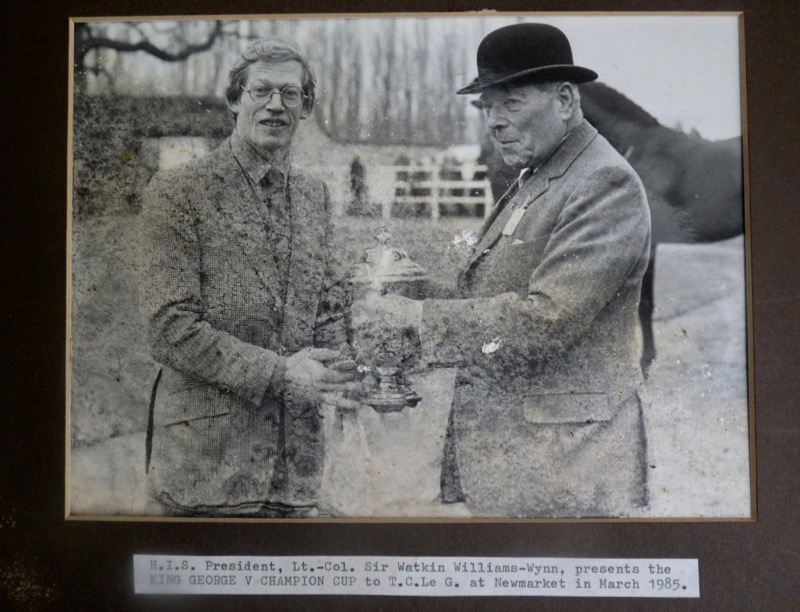
Tim Le Grice receives the King George V Champion Cup from Sir Watkin Williams-Wynn at Newmarket in 1985, for his winner, Shaab. He has kept and bred thoroughbreds ever since in the stables and paddocks here.
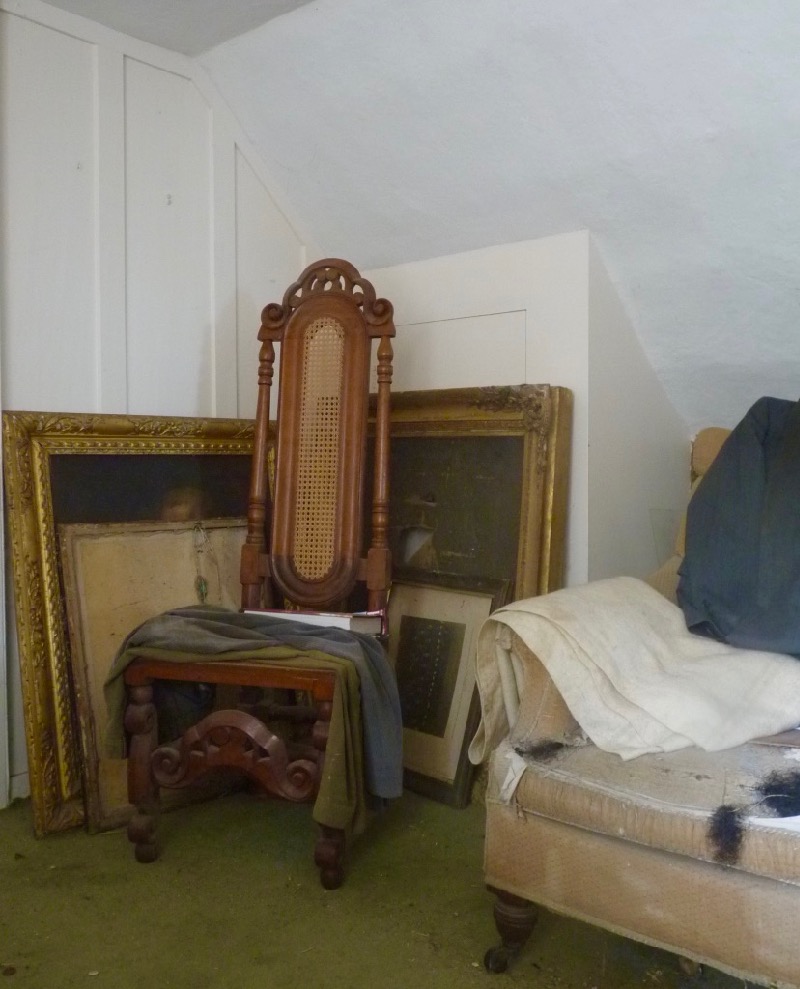
‘Everything was put up there in the attics. It wasn’t until the late 40s, early 50s, that my parents decided to move back into the house, after the war. For some reason the pictures remained up there all that length of time, I never had the opportunity to ask them about these. We don’t know who they are. Quite recently, a year ago, the whole side of the house was falling down and a friend who was an architect decided that we needed to build a wall inside, a sort of buttress, and it worked!’
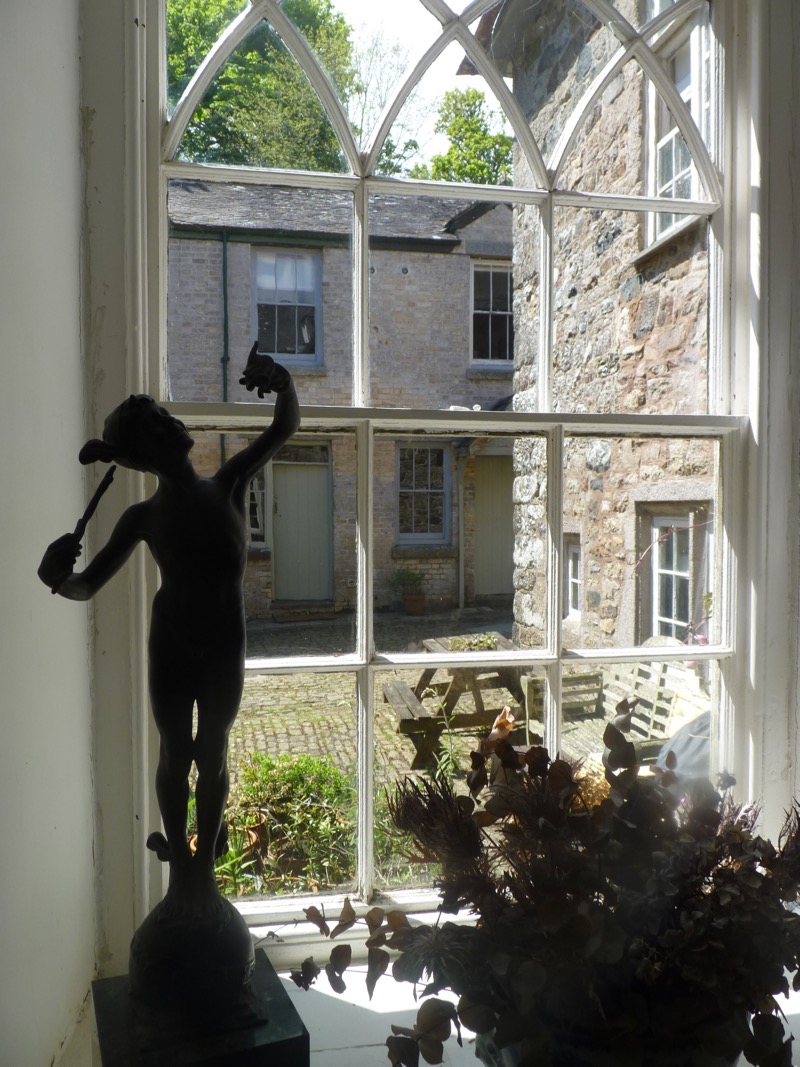
Wilmay’s grandfather Herbert Ward was of Irish ancestry, a sculptor and explorer who had been with Stanley in Africa, and spent much of his adult life living in Normandy in France; this small bronze is one of his . Wilmay’s uncle was the British Ambassador in Paris, so Wilmay did the Paris season, which coincided with the state visit of King George the VI and Queen Elizabeth in 1938 and included a banquet at Versailles and another formal occasion at which Hitler was present.’
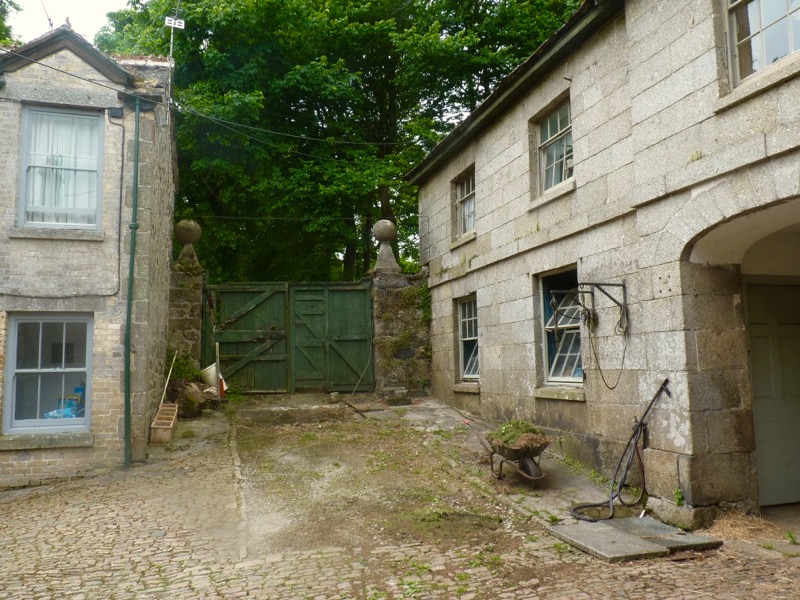
The stable yard at Trereife
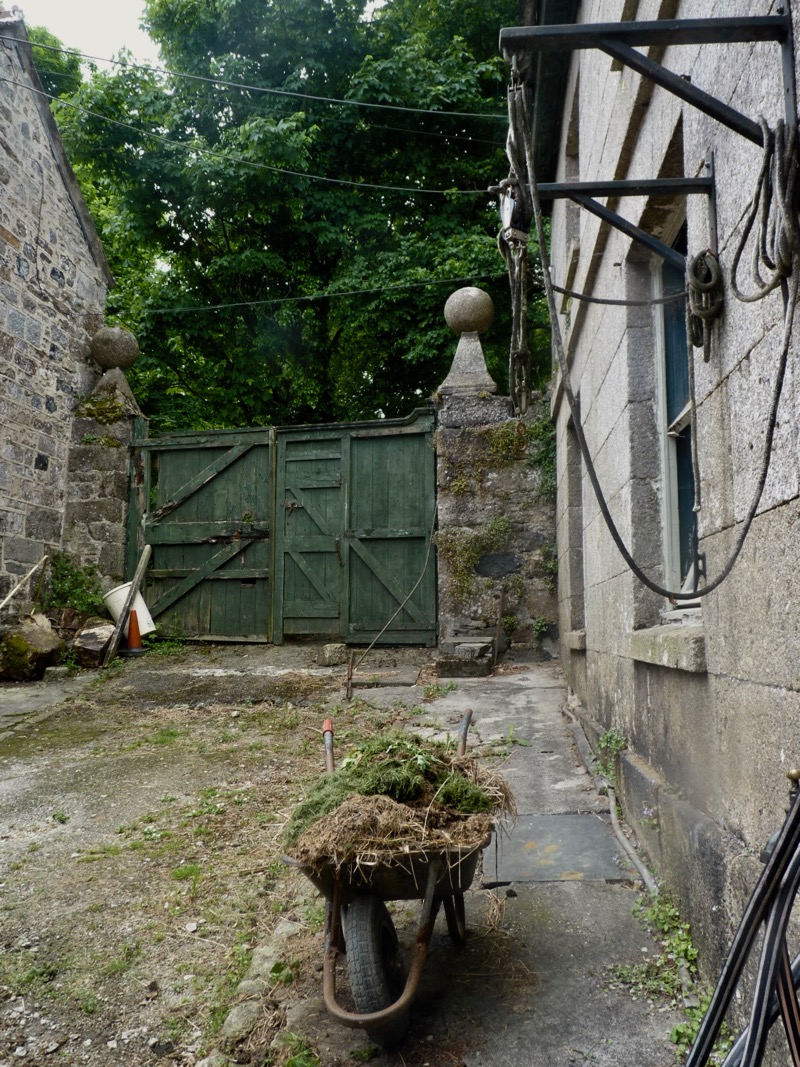
Stables still in use
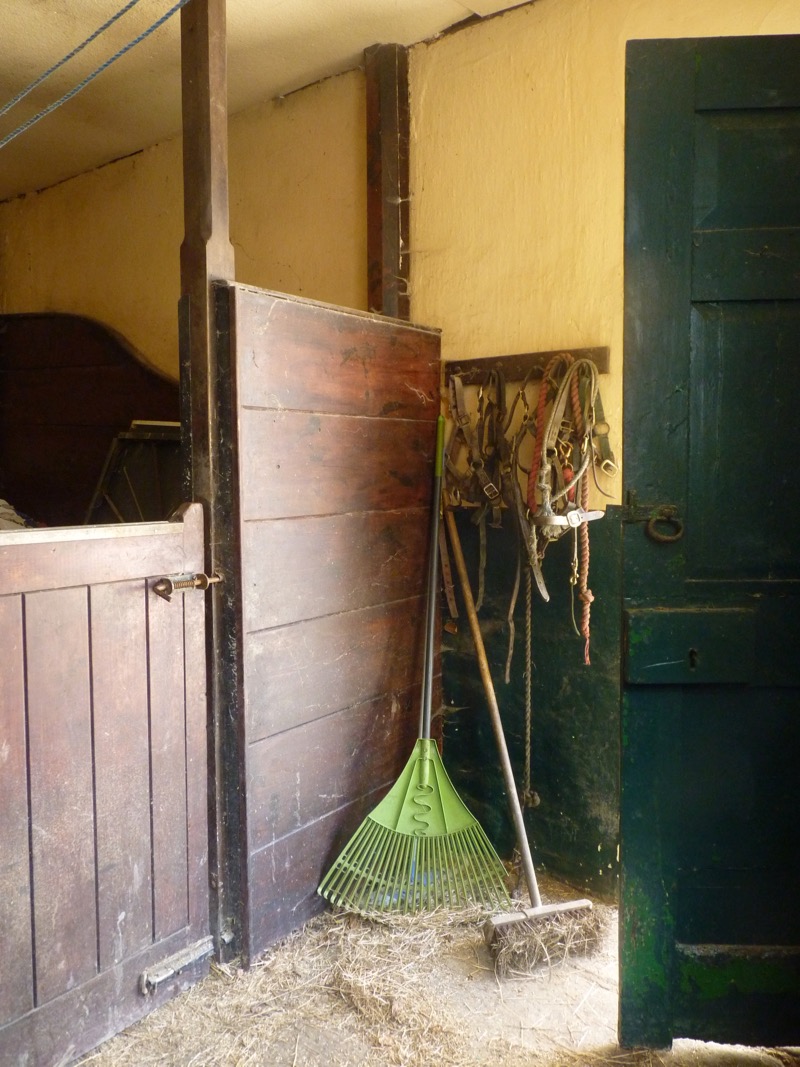
Stable
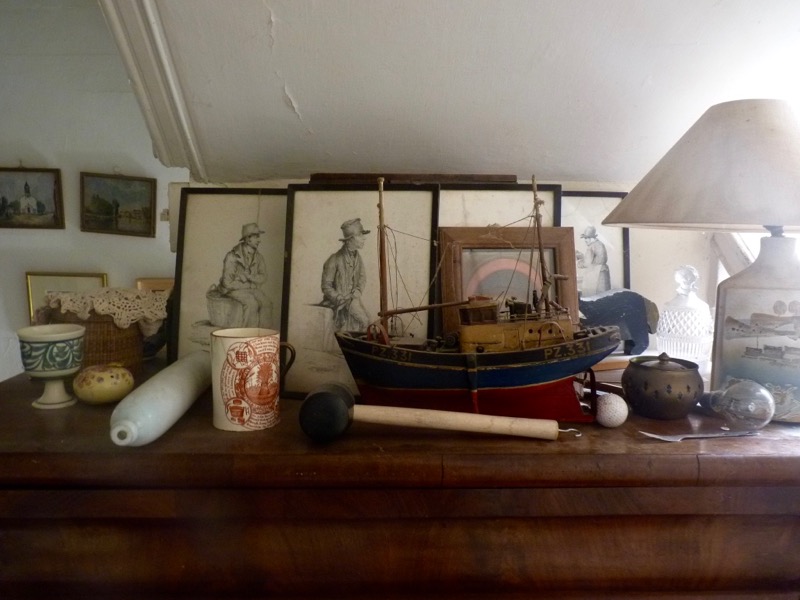
Chest of drawers in the family corridor.
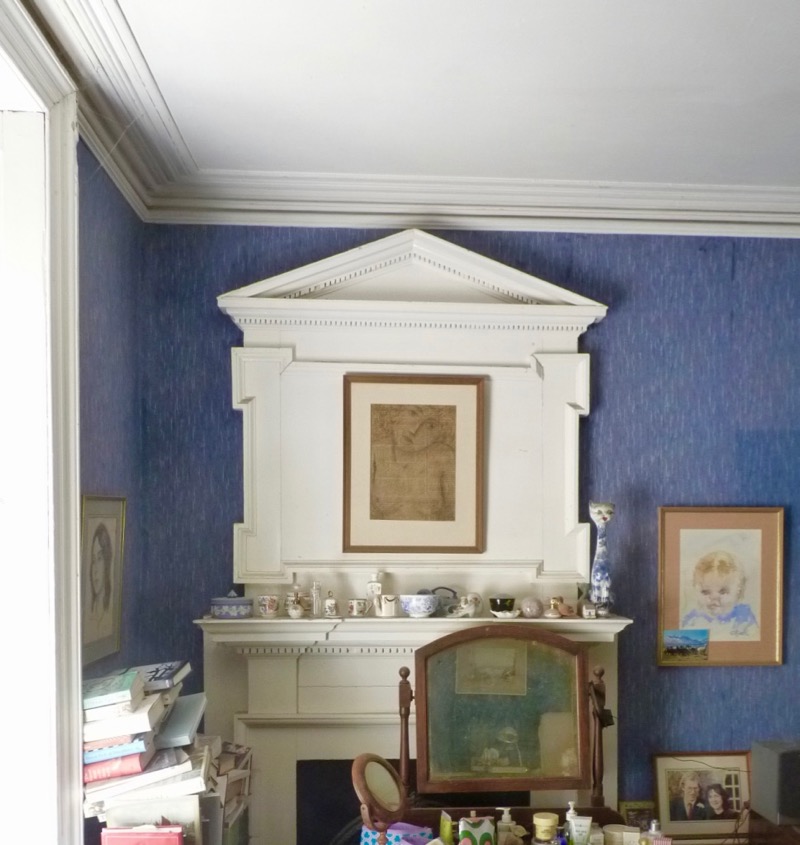
First floor Bedroom, with its very simple, Baroque-meets-Palladian, overmantle.
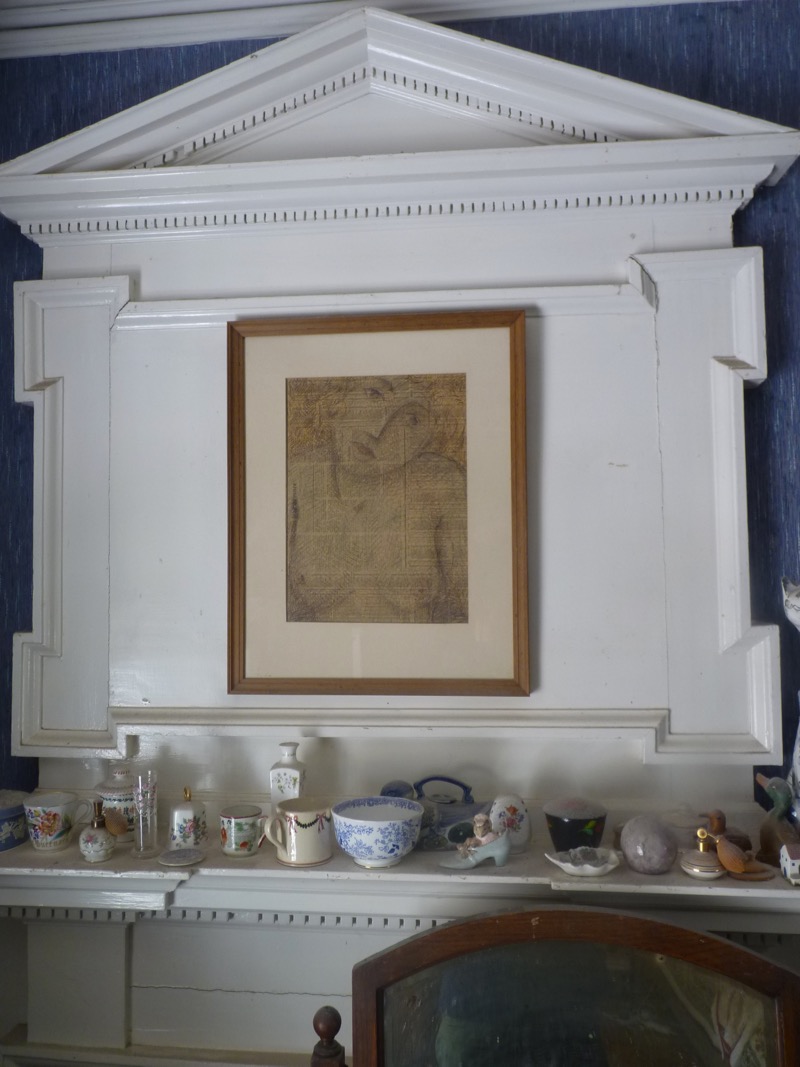
‘Over the chimney is a drawing on newspaper, our friend gave it to us as a wedding present.’
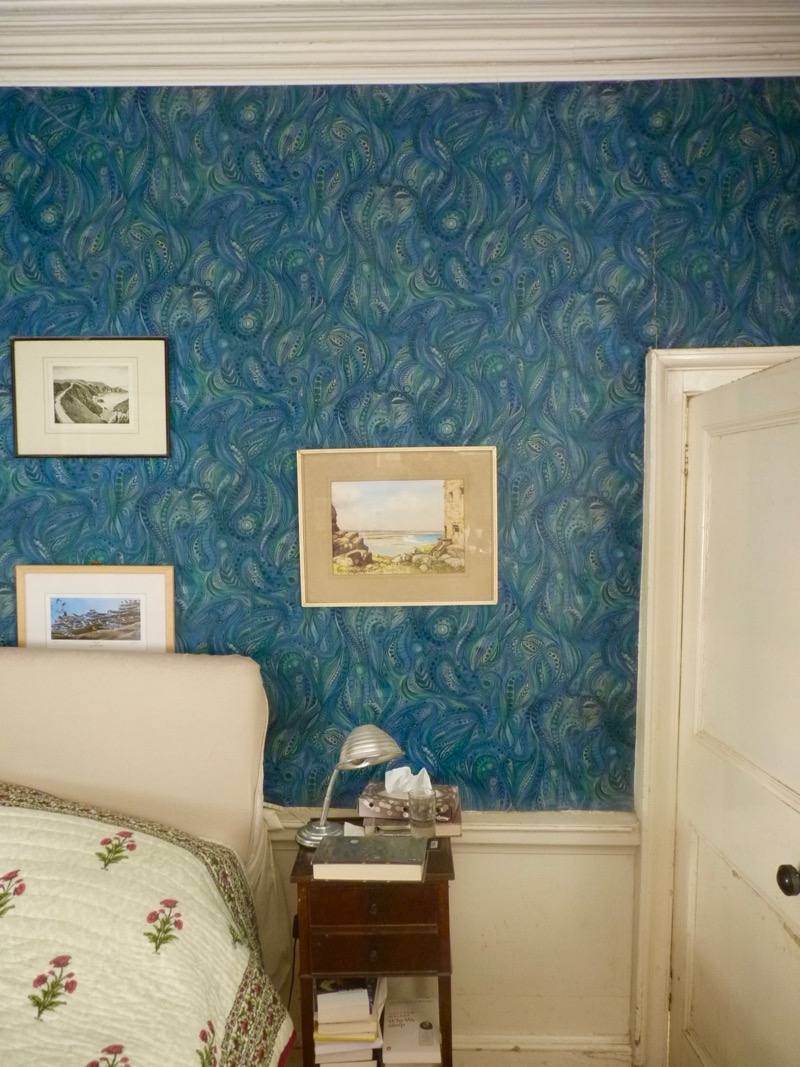
The bedroom wallpaper came from Heals.
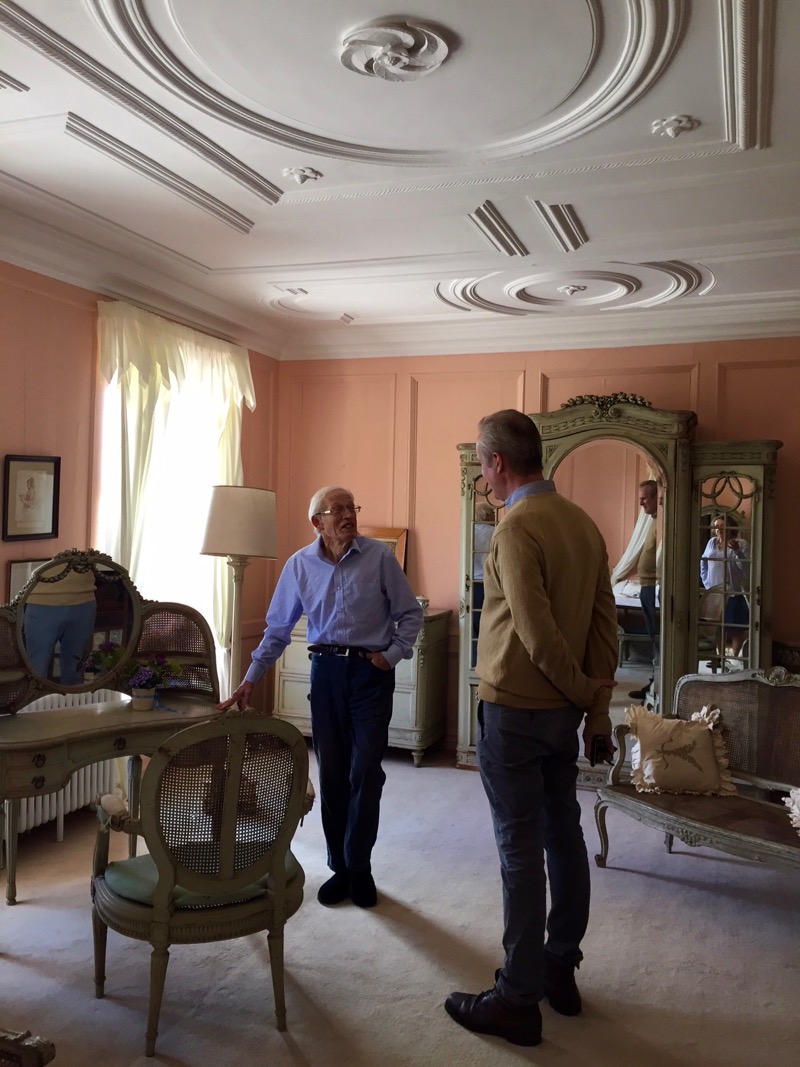
‘This is the beautiful room with all the French furniture from Wilmay’s grandmother’s house at Rolleboise, this was the Withdrawing Room, on the piano nobile overlooking the garden. It’s our only spare room, and we also use it when there are weddings here.’ Tim Le Grice and Daniel Slowik of Colefax and Fowler.
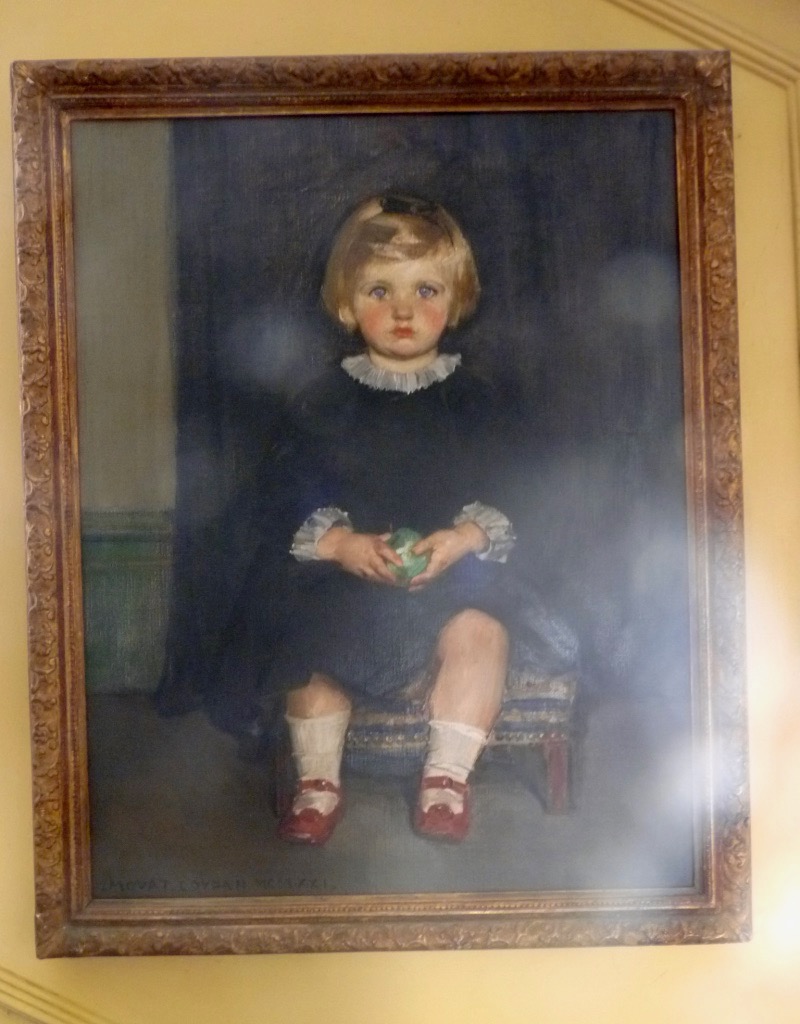
‘That’s Wilmay’ (painted by Willian Mouat Loudan (1868-1985). She had to hold an apple because she was being naughty. She suffered from a mother who always said she was ugly.’
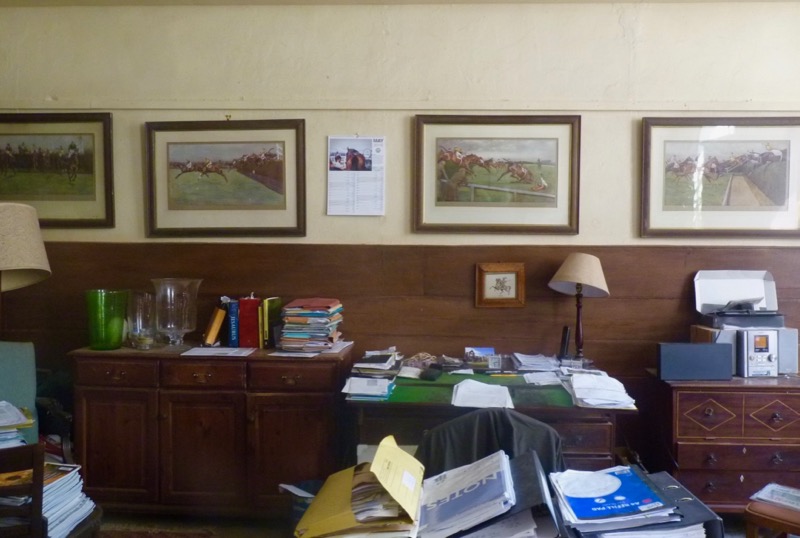
Tim’s Study occupies the huge double height old kitchens. Above his desk hang a set of prints showing scenes at the Grand National by Cecil Aldin.
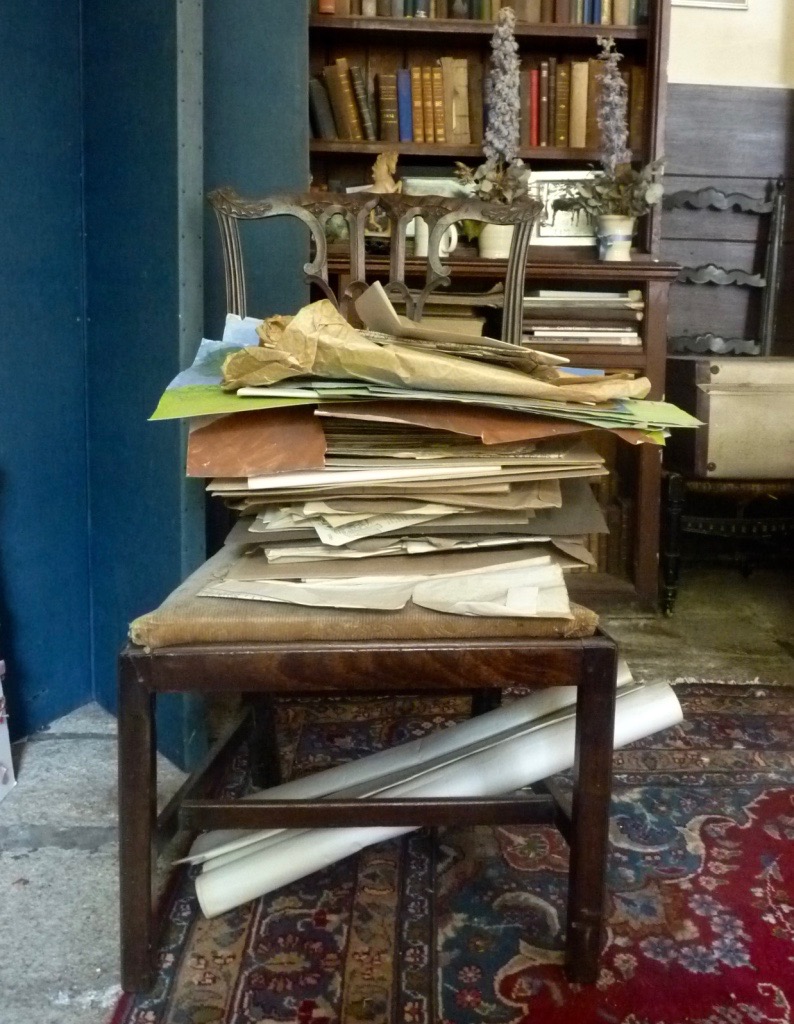
Filing system in the study
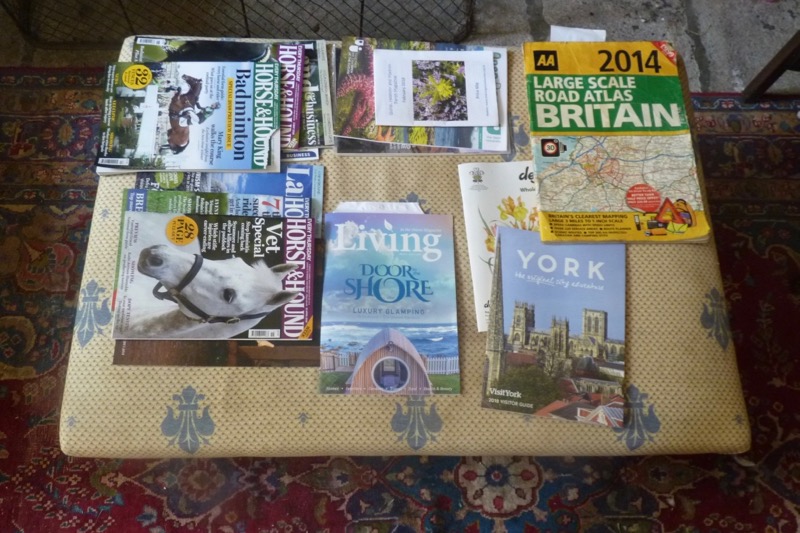
Reading matter in the study
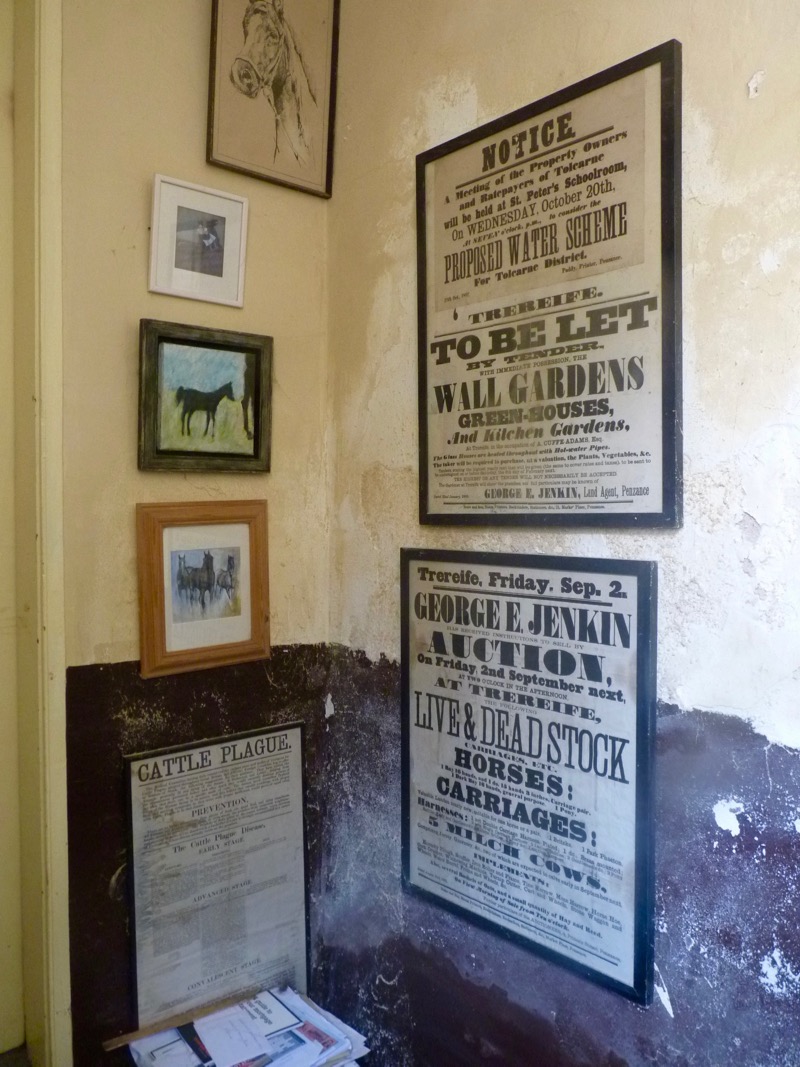
Tim’s study. ‘Once this was the servants quarters, that door goes through to the outside courtyard.’
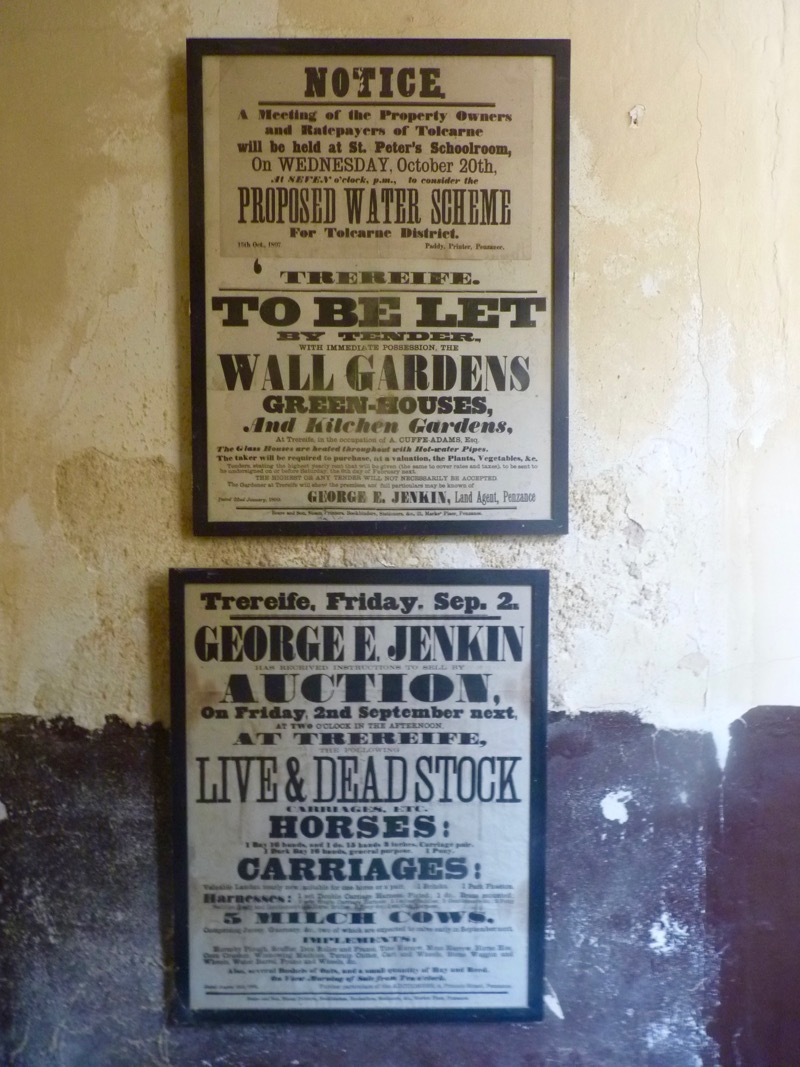
Corner at the back of the study
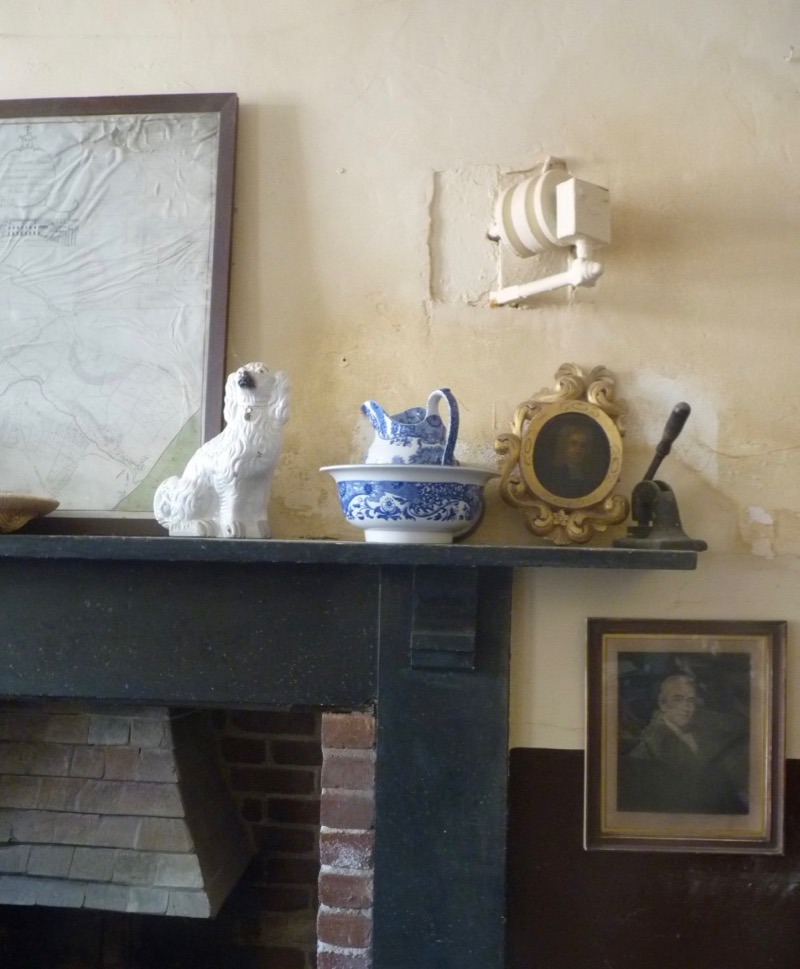
Over the old kitchen chimney (now Tim’s study) hangs a C18th estate map. Above it is the mechanism for a meat spit.
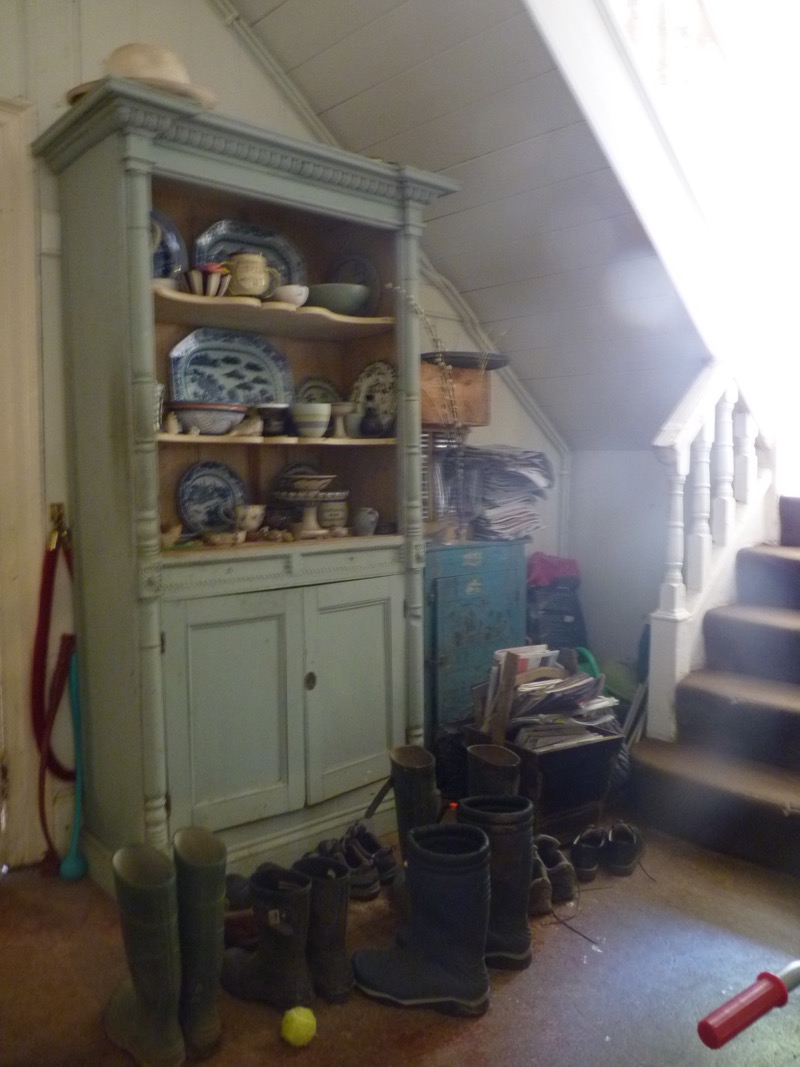
‘These are the Back Stairs, these were the main stairs of the house before its was tuned round. This is my pottery collection. I painted that it was just pine.’
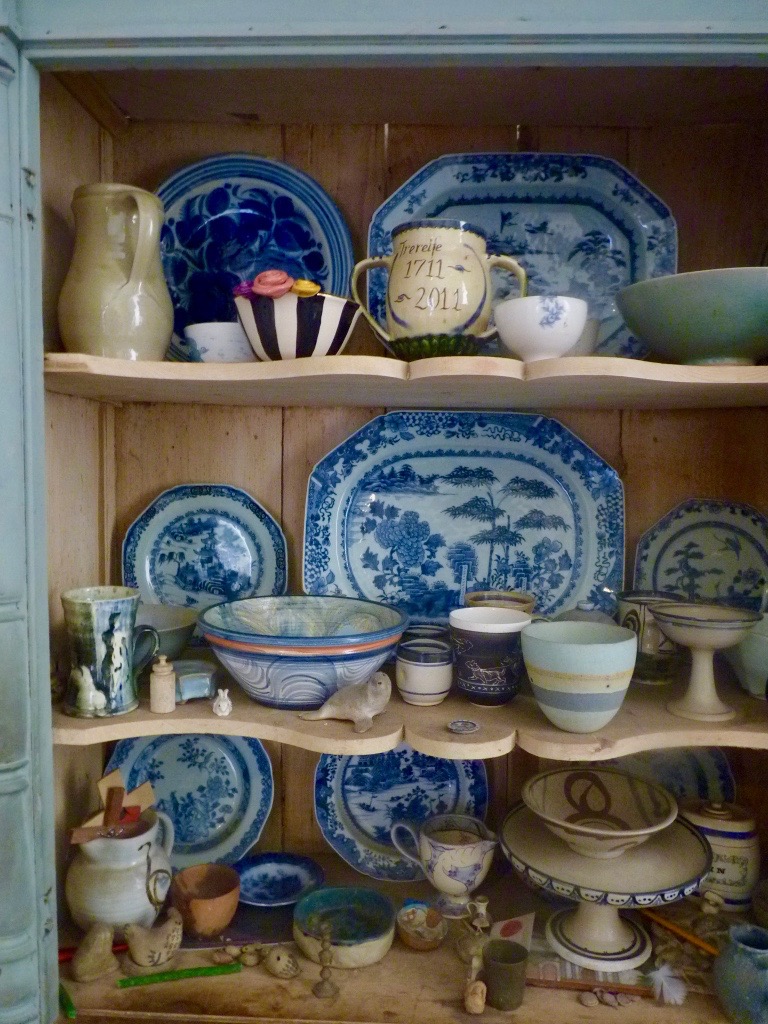
‘My pottery collection.’ Elizabeth trained as a potter at Redruth. She has always bought pictures and ceramics whenever she had a bit of money.
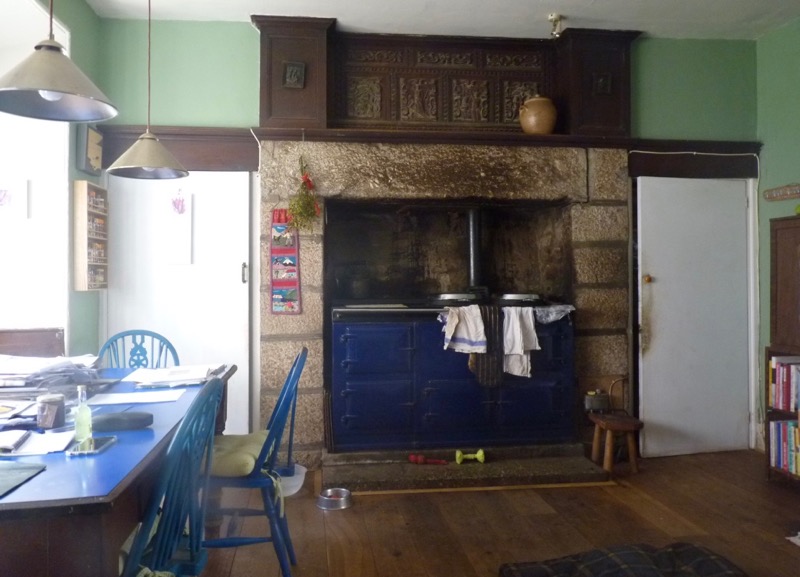
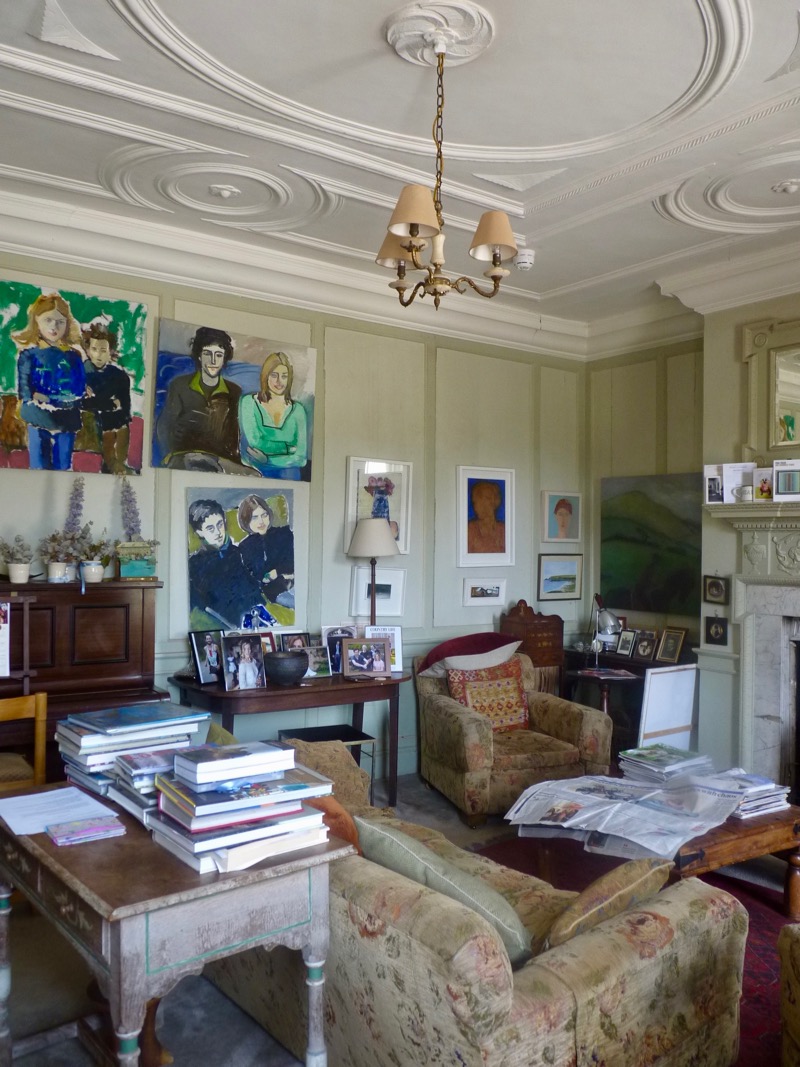
‘One of the things that fascinates me most is the fact that this house was built as it was, so far down at the Land’s End. Did we mention that the ceiling in the Breakfast Room has been dated earlier than the house itself ? 1690 rather than 1710, purely because we were behind with the fashions this far down,’ says Elizabeth. She was formerly the Art Librarian for Cornwall and purchased and set up the Cornwall Art Library. ‘These are Romi Behrens’s paintings, of Georgina and Peter growing up.The others include a head by Elizabeth Hunter and Romi’s Vase with Flowers. The pot is by Jason Wason, I got given that, because I wrote the foreword to his catalogue.’
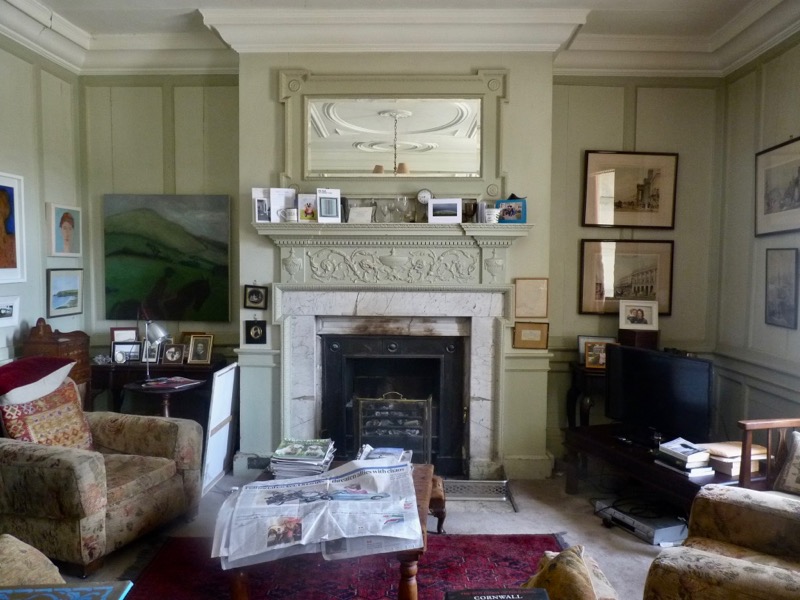
‘We live in a two up two down since doing bed and breakfast. We used to be spread over the whole house.’
Next to the chimney piece, one of two framed birthday cards sent to Wilmay by William Nicholson.
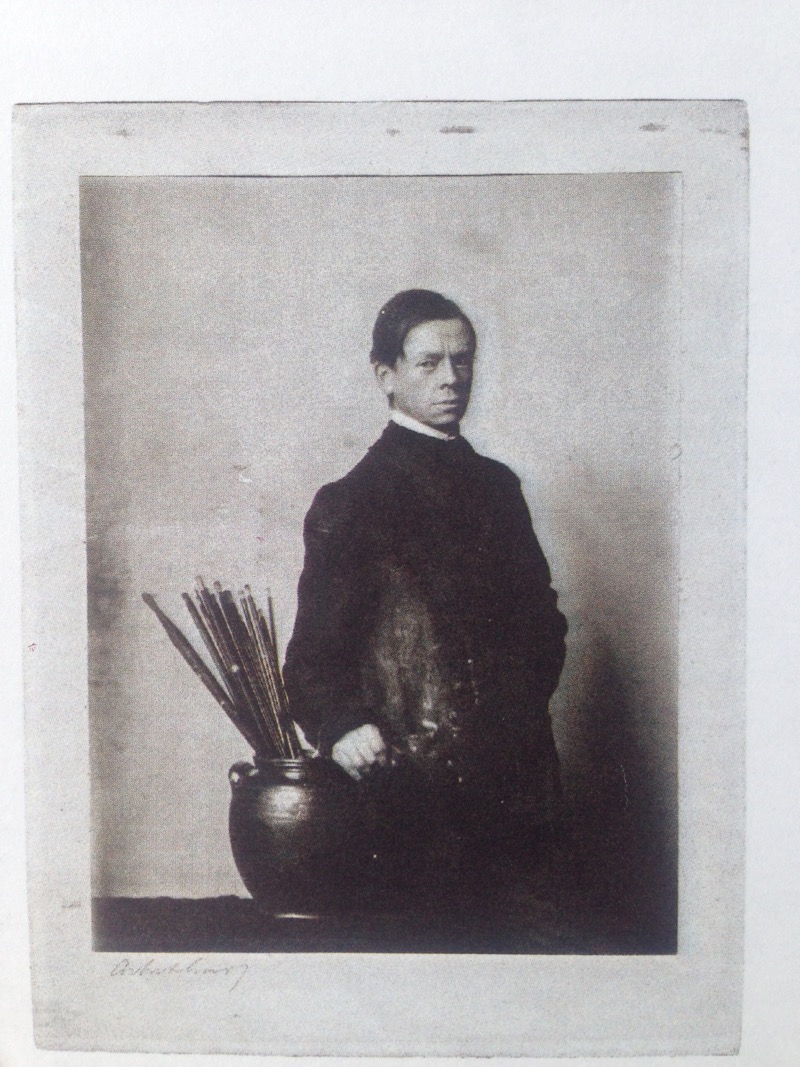
Sir William Nicholson was one of Wilmay’s six godfathers, a youthful friend of her father’s. He lived then in a converted stable in Apple Tree Yard just off St James’s in Piccadilly. “I used to take my special friends to tea with him sometimes. It was very exciting, we had tea in the stable loose box, with a round table in the middle and on the table, a big dish of prawns. He used to stand with a large spoon and throw the prawns in the air. We caught what we could, and enjoyed the ‘prawn-chase.’
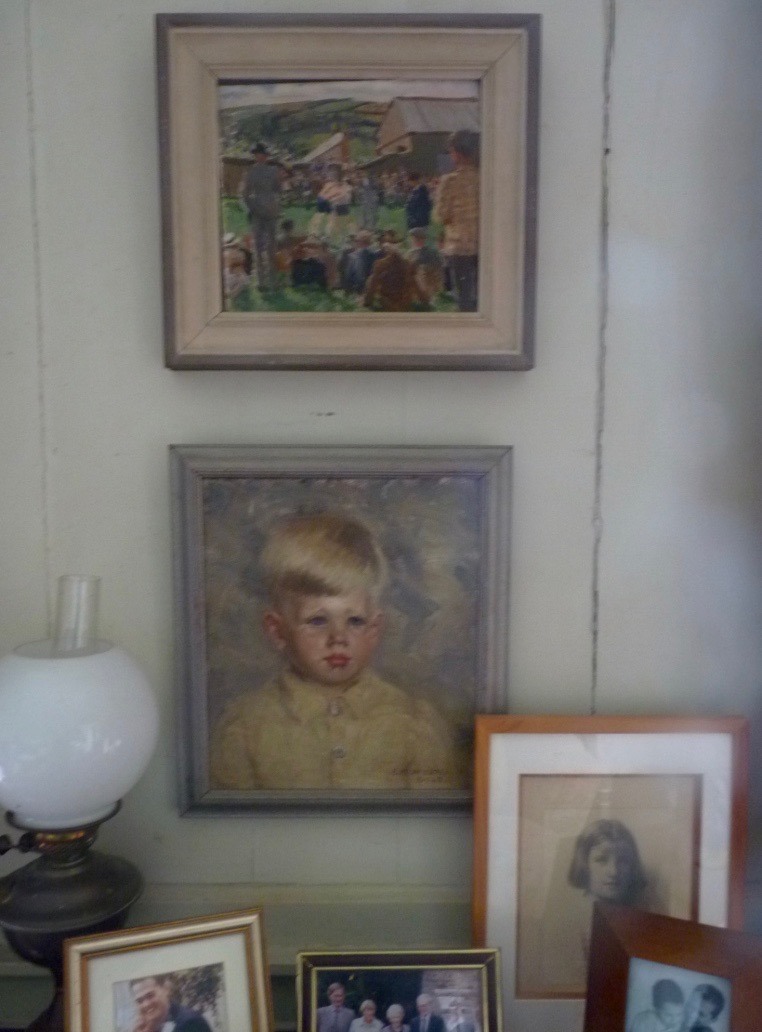
Portrait of Tim as a child.
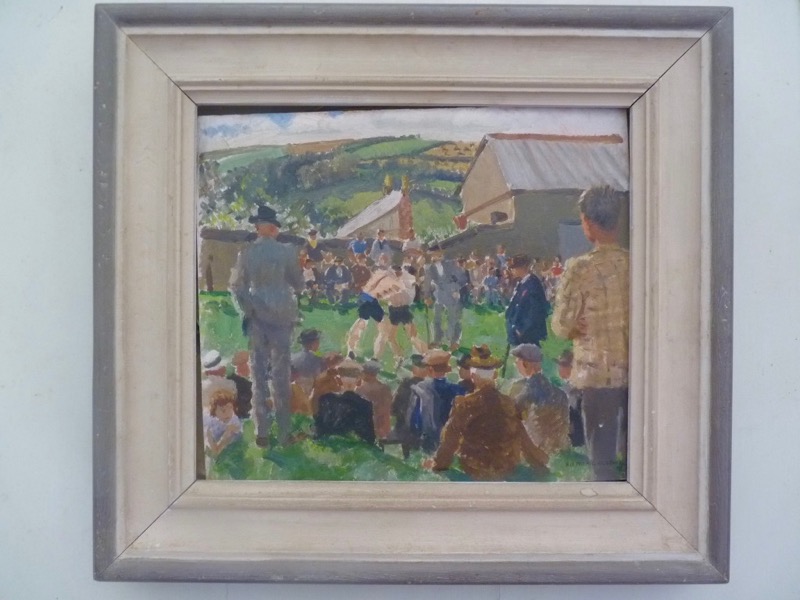
‘That’s a painting of Cornish Wrestlers by Alethea Garstin. Her executors gave it to me.’
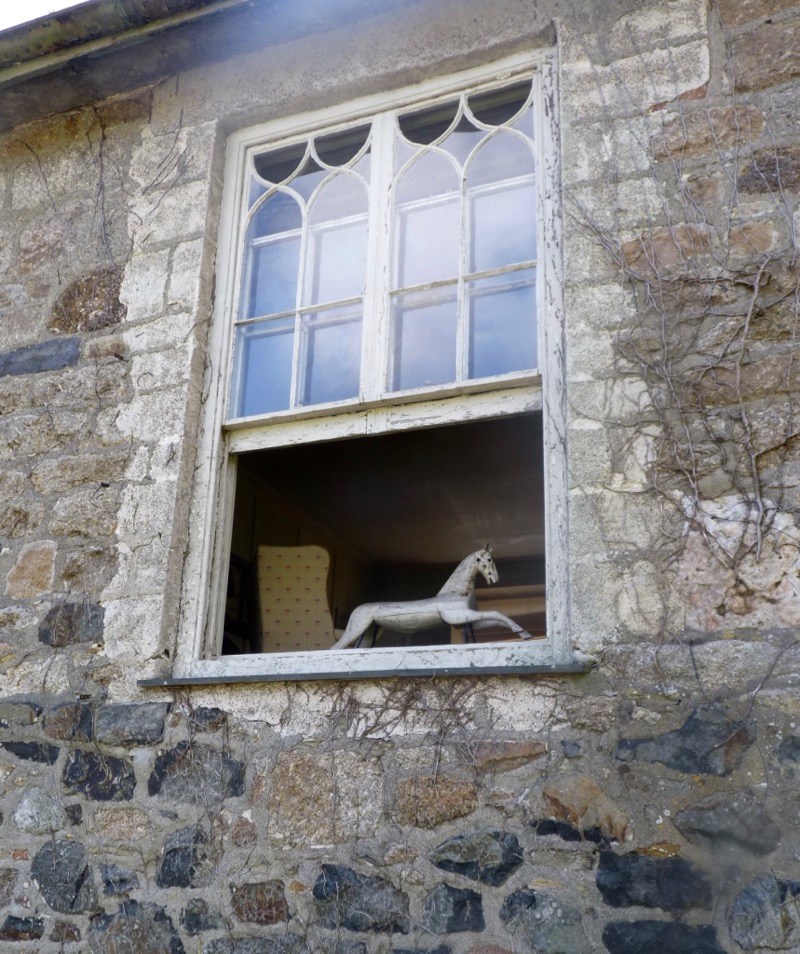
Window in the wing at the end of the house.
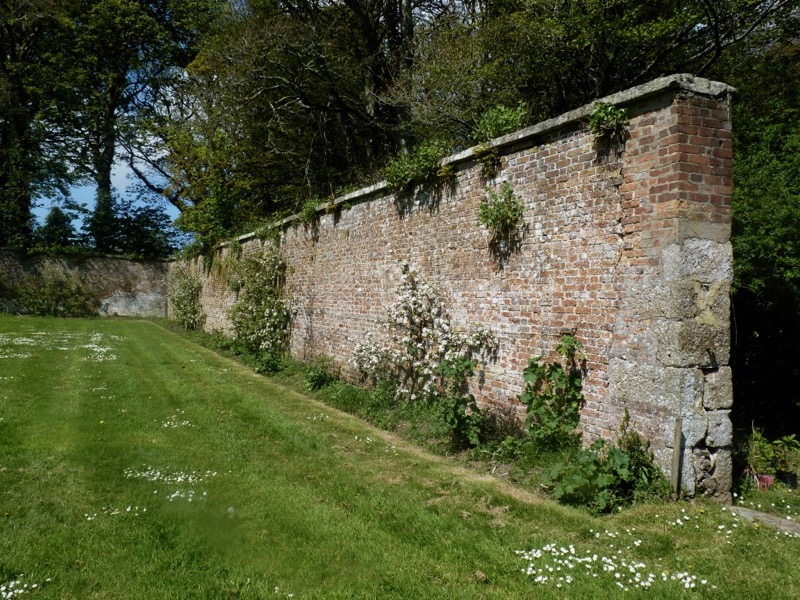
The walled garden, now laid down to grass
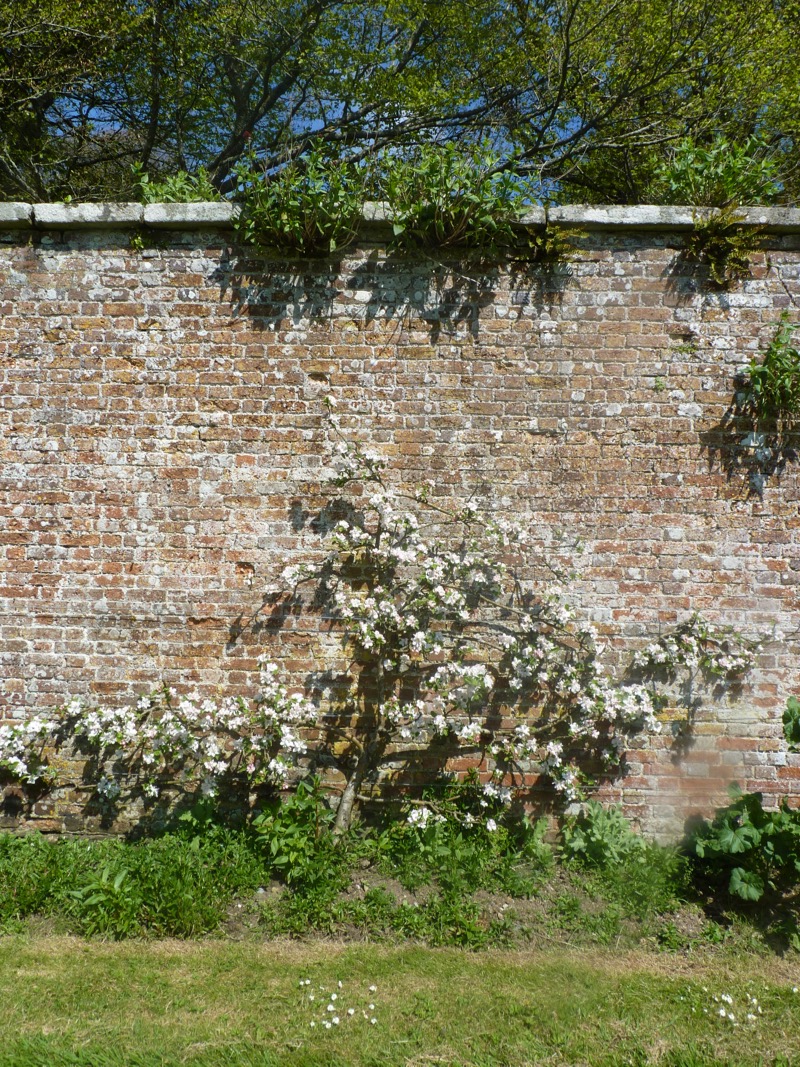
Walled garden growing
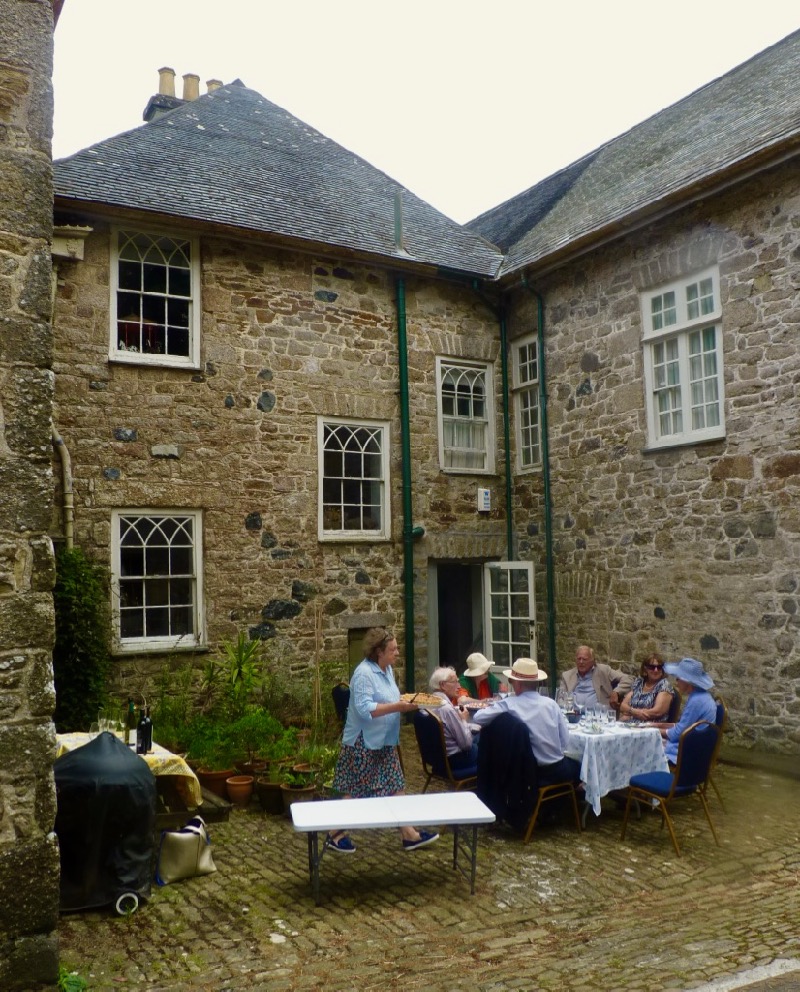
Elizabeth Le Grice serves up some lunch in the stable courtyard
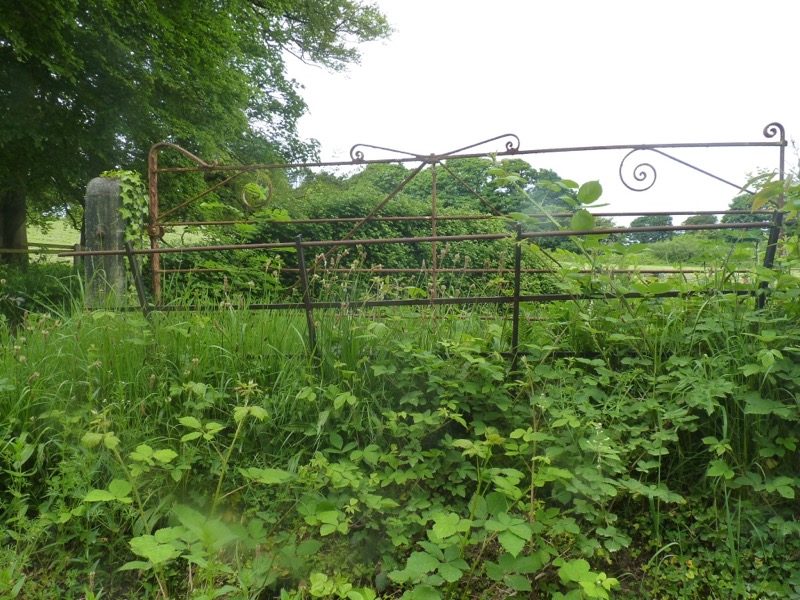
Old wrought iron gate on the front drive
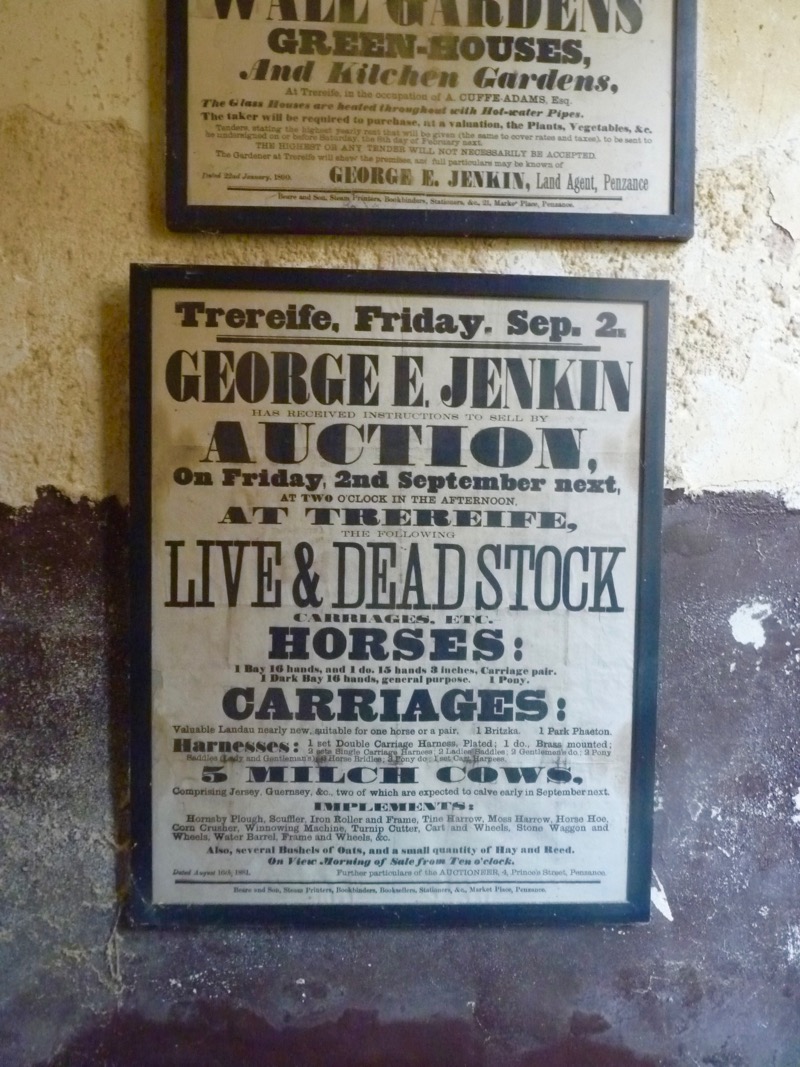
Visit or stay at Trereife House. Tours conducted by Tim Le Grice, bed and breakfast and weddings are catered for here. The gardens are often open for charity and special events too. https://trereifepark.co.uk/
https://trereifepark.co.uk/weddings/
Grateful thanks to Tim and Elizabeth Le Grice.
All photographs copyright bibleofbritishtaste. Excerpts and links may be used, provided that full and clear credit is given to bibleofbritishtaste, with appropriate and specific direction to the original content.

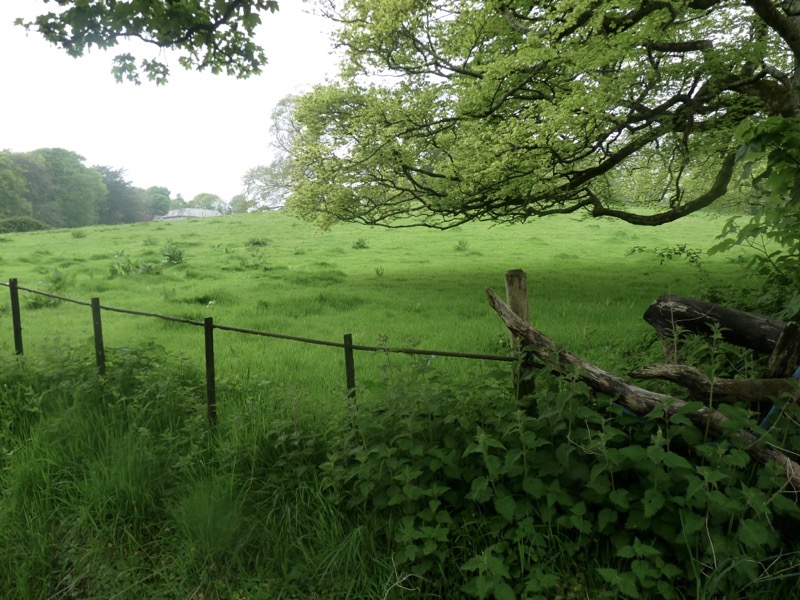
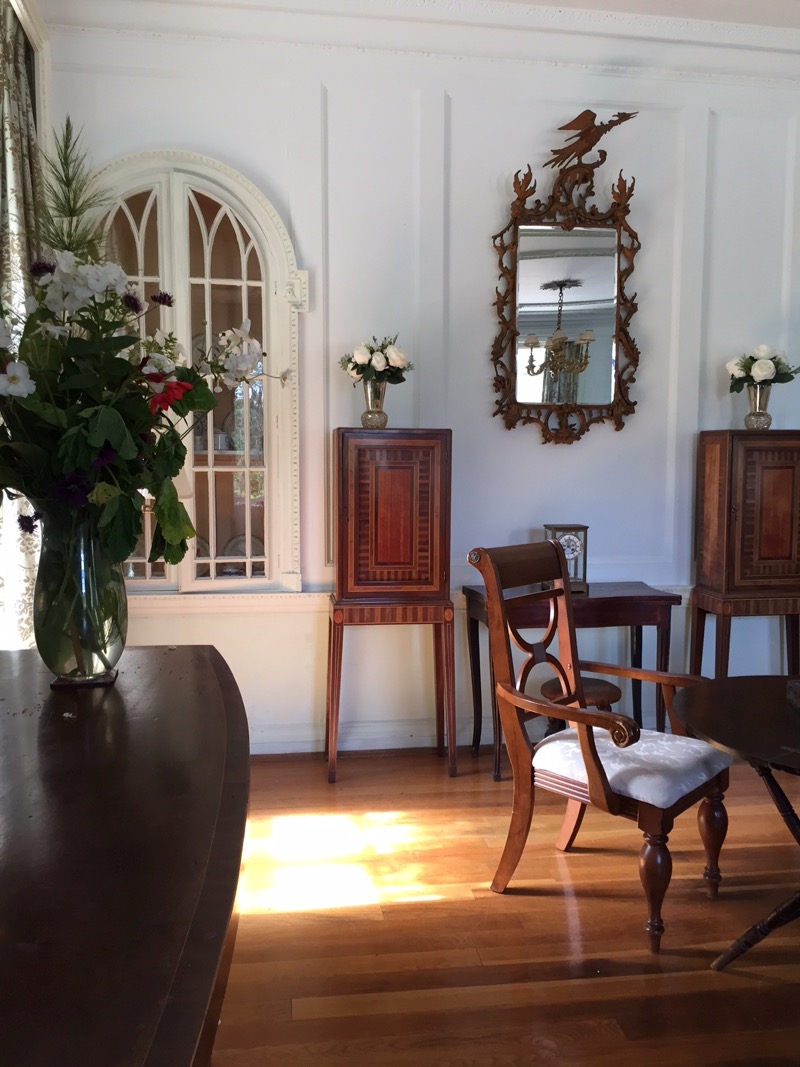
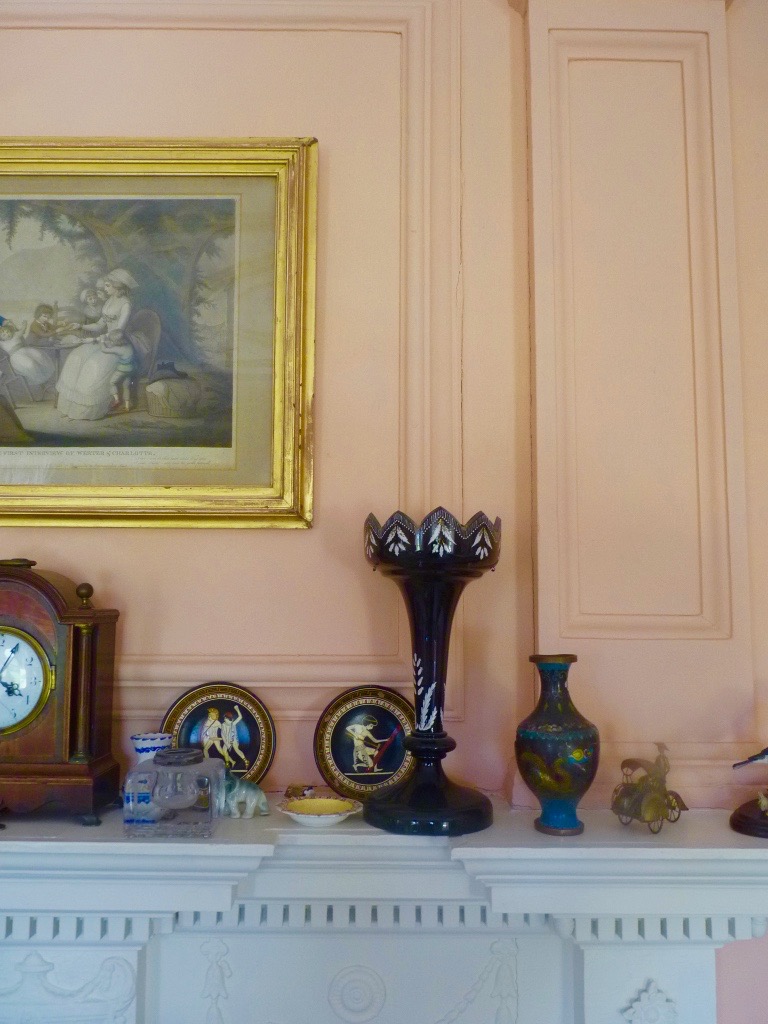
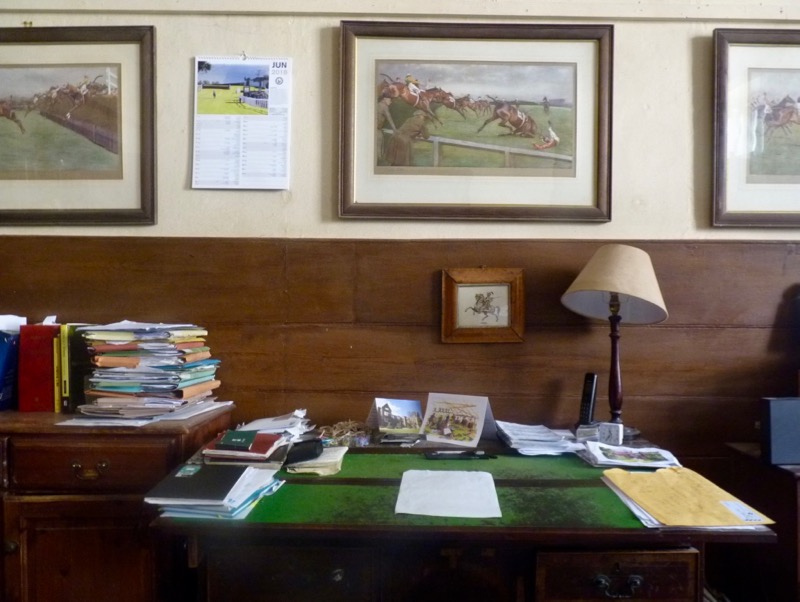
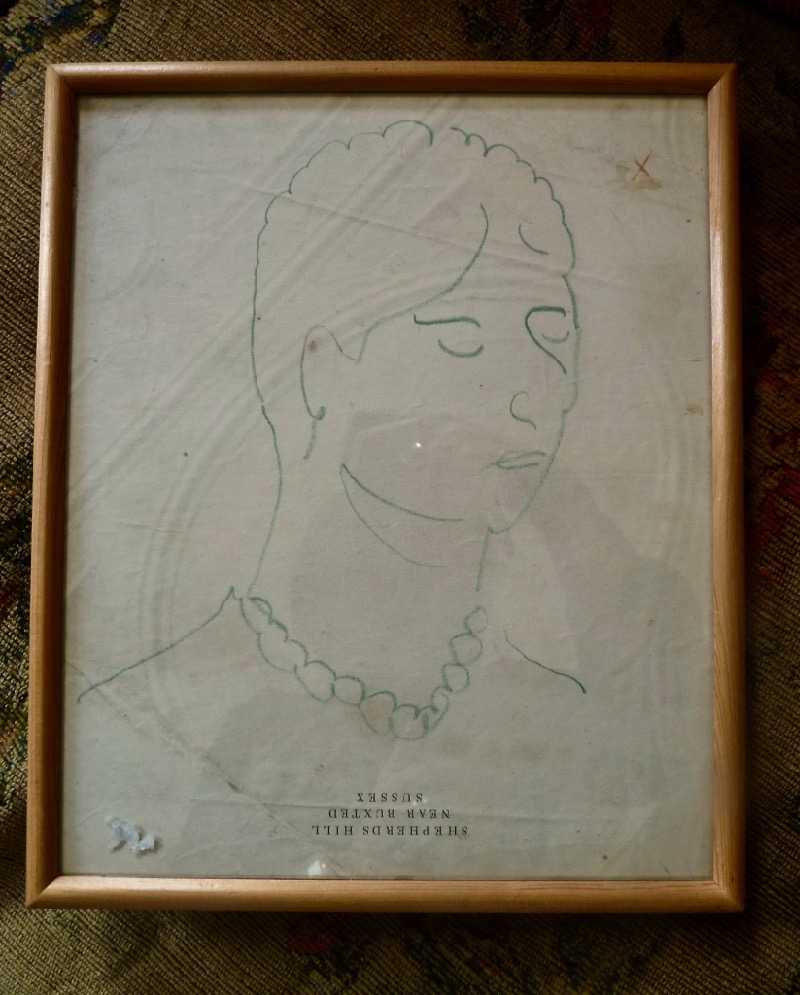
This shows Trereife as no other I have seen. Trereife is a treasure of history and family woven together and presented, thanks to the Le Grice family, with pride and tastefulness. Well done!
Every post better than the last. Such a treasure trove, your site.
So so gorgeous!
Lovely intimate images of Trereife House. Pity you couldn’t stay for Breeze Art and Makers Fair, this weekend where contemporary glass moves inside the house and wonderful sculptures in the parterre!
What a delight. One of the things that most charms me about your blog is that your photos show the minutia of life—the back halls filled with muddy boots, the kitchen cloths, the junk stacked in corners, the dusty stables. It’s real life, not a National Trust museum house. Seeing this induces such a feeling of satisfaction and peace that there is almost a tendency to drift off, as if one were sitting in that garden on a sunny afternoon…
Wonderful insights into the building, the people in it, life going on. A benevolent, candid camera with interesting captions. Intimate without being nosy or nit-picking. Thank you for opening our eyes and maintaining a rosy hue on life!
Oh thank you Emily! All those years ago, in the Hebrides?
Hi, I want to subscribe for this website to obtain newest updates, thus
where can i do it please help.
Thank you! A wonderful read and I must visit when it’s possible again. I have ancestors who lived and worked at Trereife in the mid C19th so I’d love to know more!
Quite the best vignette of a private house in the country that I’ve had the pleasure to come across in a long while, thank you.
Brought here by chance after watching the Channel 4 “Country House Rescue” programme. You know the one: look what the silly old fool in the big house is doing to his children’s inheritance despite, or indeed to spite them.
I understand that there’s been a marriage and a bereavement since then but I feel sure that Georgie will have kept up the family collection herein so openly shared with your readers.
I worked for Mrs Wilmay Le Grice she was lovely, I love her still.